Articles about Nonviolent Organizing for Action and change. Click the title of each article to read the full article.
This portfolio contains articles about how to organize and how nonviolent organizing is affected by current issues and ideas. Many areas of nonviolent organizing are covered, from action in politics to civil disobedience. Many of these articles have been published on the main Rise Up Times blog in the past but this section puts them in one place. New articles are added as appropriate.
Media for the people! Bringing you the best of the alternative media and original articles and videos. Click here to help by learning more about Rise Up Times, spreading the word, and making a donation.
No Peace! No Justice! Please share this post.
The contents of Rise Up Times do not necessarily reflect the views of the editor.
Support independent media. Give today.
+++
Violence is a hatchet when a surgeon’s knife is needed.
+++
Why direct action campaigns are the best way to empower yourself and others
For more than a century, from 1900 to 2006, campaigns of nonviolent resistance were more than twice as effective as their violent counterparts in achieving their stated goals. By attracting impressive support from citizens, whose activism takes the form of protests, boycotts, civil disobedience, and other forms of nonviolent noncooperation, these efforts help separate regimes from their main sources of power and produce remarkable results, even in Iran, Burma, the Philippines, and the Palestinian Territories.
Combining statistical analysis with case studies of specific countries and territories, Erica Chenoweth and Maria J. Stephan detail the factors enabling such campaigns to succeed and, sometimes, causing them to fail. They find that nonviolent resistance presents fewer obstacles to moral and physical involvement and commitment, and that higher levels of participation contribute to enhanced resilience, greater opportunities for tactical innovation and civic disruption (and therefore less incentive for a regime to maintain its status quo), and shifts in loyalty among opponents’ erstwhile supporters, including members of the military establishment.
Chenoweth and Stephan conclude that successful nonviolent resistance ushers in more durable and internally peaceful democracies, which are less likely to regress into civil war. Presenting a rich, evidentiary argument, they originally and systematically compare violent and nonviolent outcomes in different historical periods and geographical contexts, debunking the myth that violence occurs because of structural and environmental factors and that it is necessary to achieve certain political goals. Instead, the authors discover, violent insurgency is rarely justifiable on strategic grounds.
SUBJECTS
SERIES
PUB DATE: December 2012
ISBN: 9780231156837
320 pages
FORMAT: Paperback
LIST PRICE: $26.00£20.00
PUB DATE: August 2011
ISBN: 9780231156820
320 pages
FORMAT: Hardcover
LIST PRICE: $65.00£50.00
PUB DATE: August 2011
ISBN: 9780231527484
320 pages
FORMAT: E-book
LIST PRICE: $25.99£20.00
+++
+++
How to Organize a Ban Nuclear Weapons Campaign, State by State
The next step toward attaining a world free of nuclear weapons must involve the nuclear armed states. Disarming nuclear weapons should not be a difficult process since we have the technical expertise and verification procedures in place.
By Marie Braun Rise Up Times Setember 9, 2018
10 ways to support the black lives matter movement
Don’t forget that often, silence is violence.

Photography Christelle de Castro
“What would America be like if we loved black people as much as we love black culture?” asks actress Amandla Stenberg in the widely-shared video Don’t Cash Crop On My Cornrows. If Americans accepted the black family down the street as much as the Jackson Five, black culture would be both accredited and respected and black lives would unquestionably matter to all. However, given the recent rise in police shootings on black folks (#AltonSterling, #PhilandoCastile, and, unfortunately, many more), we are reminded that this is not the case. The Black Lives Matter (BLM) movement is once again in the media spotlight — but why is it that we need violence against the black community to show that black lives matter? How can we, especially non-black folks, effectively and proactively be in solidarity with the BLM movement? We’ve compiled a list of 10 ways of how you can support the Black Lives Matter movement.
By Perwana Nazif i-D Vice August 1, 2016
Popular Resistance School
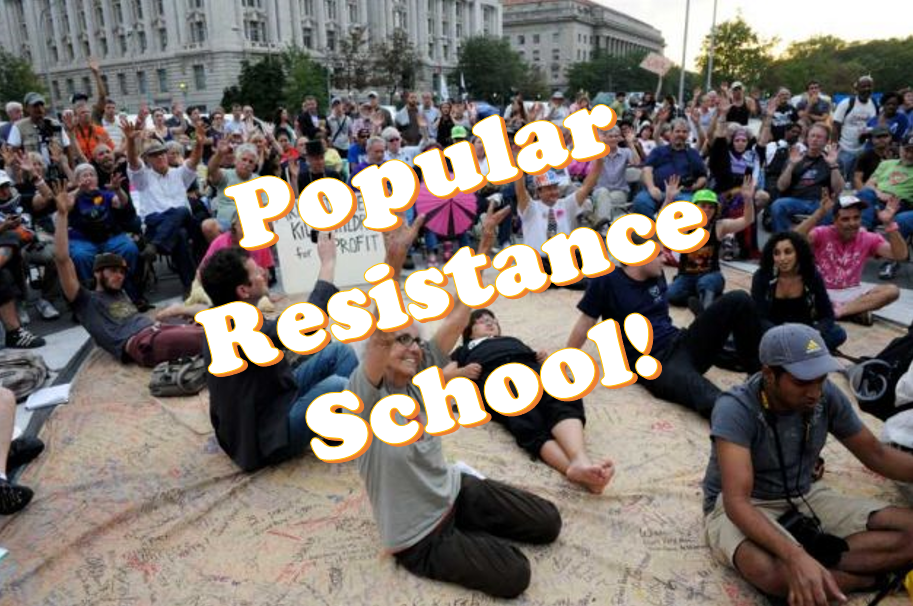
The Popular Resistance School will provide political education to help you understand the moment in which we live and how to challenge the power structure effectively. This web-based school will cover strategy and tactics, detailed analysis of key issues and skills-building videos.
Our First Course Is Here!
How Social Transformation Occurs
This eight-week course covers basic social movement theory including models of power, stages of successful social movements, roles of individuals and organizations in social movements, overcoming obstacles and tools for developing strategy and choosing and evaluating tactics.
The course consists of eight video lectures and a written curriculum.
Look below for the links to the individual classes.
Download the curriculum here: curriculum-course-1
There is no charge for the course. All who are interested are welcome to participate. If you are able to donate to support the costs of course, that is encouraged. We urge you to become a monthly sustainer to keep the school going. Click here to donate.
After you complete the course, you will be ready to hold a local course in your community. Popular Resistance will provide virtual support for your efforts. Contact us at [email protected].
How Social Transformation Occurs
Class 1 – Power Holders versus People Power – We review definitions of oligarchy, plutocracy, democracy and social movement; studies on oligarchy; two models of power, the Power Elite model and the People Power model; how elites maintain the status quo and how popular movements counter the elite’s actions.
Class 2 – How to Build Popular Power – We cover some of the new data on successful social movements, characteristics of successful social movements, how to build a movement, when to negotiate and the effectiveness of violence versus nonviolence.
Class 3 – Stages of Successful Social Movements – We discuss Bill Moyer’s Movement Action Plan: The Eight Stages of Successful Social Movements, including the political environment of each stage and the tasks of the movement in each stage, particularly stages one through five.
Class 4 – The Three Final Stages – We provide a more in-depth look at stages six, seven and eight. In particular, we examine the tasks and pitfalls of stage six, “Building National Consensus” and how to navigate the 12 phases, describe the mechanisms of success and what the movement does after success.
Class 5 – Roles of Individuals and Organizations – We review the four roles that individuals and organizations play in a social movement and what makes them more or less effective. We also discuss how coalitions function and basic principles for making them effective. Finally, we discuss the non-profit industrial complex.
Class 6 – Overcoming Obstacles – We review ways that movements are divided and taken off track, from intentional efforts to divide and conquer, as described by the corporate surveillance firm Stratfor, to co-optation, which can be insidious. We also discuss the relationship between electoral work and movements.
Class 7 – Infiltration – We describe the difference between an infiltrator and an informant. We explain the broad goals of infiltrators to gather information and disrupt and provide a list of tactics that are used. We explain how to recognize that an infiltrator may be present and what to do about it to both protect the organization and to confront the infiltrator.
Class 8 – Tools for Movements – In this class, we discuss the basics of organizing and describe a variety of tools that can be used to develop strategy and to evaluate tactics.
Popular Resistance Beginning in May 2018
“We’re not talking about political differences. We’re talking about thousands of children being kidnapped and put in jails.”
July 15, 2018 ·
8 Lessons For Today’s Youth-Led Movements From A Decade Of Youth Climate Organizing
THE DANGER OF LEADERSHIP CULTS, BY CHRIS HEDGES
“My theory is, strong people don’t need strong leaders.” —Ella Baker
One of the most important aspects of organizing is grass-roots educational programs that teach people, by engaging them in dialogue, about the structures of corporate power and the nature of oppression.
By Chris Hedges Truthdig May 6, 2018 May 8, 2018
THE CULT OF VIOLENCE ALWAYS KILLS THE LEFT, BY CHRIS HEDGES
 Mr. Fish / Truthdig
Mr. Fish / Truthdig
A former SDS leader talks about activism and strategic planning and nonviolence vs. violence.
“The thing about nonviolence is that it works,” [Rudd] said. “But it only works if it’s total. The cops put the burden of violence on protesters. Our job is to do the opposite. Our job is to make it crystal clear it’s the government and the system that engages violence. We muddy the water when we use violence.”
By Chris Hedges Truthdig TD ORIGINALS April 16, 2018
April 19, 2018
CHRIS HEDGES | HOW WE FIGHT FASCISM
From the organizer of the first International Women’s Day
Fascism, [Clara] Zetkin wrote, pits one segment of the working class against another. Last year at the Charlottesville, Va., demonstration that turned deadly, the “antifa” activists and neo-Nazis who clashed came largely from the same dispossessed economic stratum.
 Political theorist and activist Clara Zetkin (1857-1933). (Mr. Fish / Truthdig)
Political theorist and activist Clara Zetkin (1857-1933). (Mr. Fish / Truthdig)
By Chris Hedges Truthdig February 18, 2018
In 1923 the radical socialist and feminist Clara Zetkin gave a report at the Communist International about the emergence of a political movement called fascism. Fascism, then in its infancy, was written off by many liberals, socialists and communists as little more than mob rule, terror and street violence. But Zetkin, a German revolutionary, understood its virulence, its seduction and its danger. She warned that the longer the stagnation and rot of a dysfunctional democracy went unaddressed, the more attractive fascism would become. And as 21st-century America’s own capitalist democracy disintegrates, replaced by a naked kleptocracy that disdains the rule of law*, the struggle of past anti-fascists mirrors our own. History has amply illustrated where political paralysis, economic decline, hypermilitarism and widespread corruption lead.
Zetkin’s analysis, eerily prophetic and reprinted in the book “Fighting Fascism: How to Struggle and How to Win,” edited by John Riddell and Mike Taber, highlights the principal features of emerging fascist movements. Fascism, Zetkin warned, arises when capitalism enters a period of crisis and breakdown of the democratic institutions that once offered the possibility of reform and protection from an uninhibited assault by the capitalist class. The unchecked capitalist assault pushes the middle class, the bulwark of a capitalist democracy, into the working class and often poverty. It strips workers of all protection and depresses wages. The longer the economic and social stagnation persists, the more attractive fascism becomes. Zetkin would have warned us that Donald Trump is not the danger; the danger is the growing social and economic inequality that concentrates wealth in the hands of an oligarchic elite and degrades the lives of citizens.
The collapse of a capitalist democracy, she wrote, leaves those in the working class disempowered. Their pleas go unheard. Reforms to address their suffering are cosmetic and useless. Their anger is written off as irrational or racist. A bankrupt liberal class, which formerly made incremental and piecemeal reform possible, ameliorating the worst excesses of capitalism, mouths empty slogans about social justice and the rights of workers while selling them out to capitalist elites. The hypocrisy of the liberal class evokes not only a disdain for it but a hatred for the liberal, democratic values it supposedly espouses. The “virtues” of democracy become distasteful. The crude taunts, threats and insults hurled by fascists at the liberal establishment express a legitimate anger among a betrayed working class. Trump’s coarseness, for this reason, resonates with many pushed to the margins of society. Demoralized workers, who also find no defense of their interests by establishment intellectuals, the press and academics, lose faith in the political process. Realizing the liberal elites have lied to them, they are open to bizarre and fantastic conspiracy theories. Fascists direct this rage and yearning for revenge against an array of phantom enemies, most of them scapegoated minorities.
“What weighs on them above all is the lack of security for their basic existence,” Zetkin wrote of the dispossessed working class.
Media for the people! Learn more about Rise Up Times and how to sustain
People Supported News.
Follow RiseUpTimes on Twitter RiseUpTimes @touchpeace
“Masses in their thousands streamed to fascism,” she went on. “It became an asylum for all the politically homeless, the socially uprooted, the destitute and disillusioned. … The petty-bourgeois and intermediate social forces at first vacillate indecisively between the powerful historical camps of the proletariat and bourgeoisie. They are induced to sympathize with the proletariat by their life’s suffering and, in part, by their soul’s noble longings and high ideals, so long as it is revolutionary in its conduct and seems to have prospects for victory. Under the pressure of the masses and their needs, and influenced by this situation, even the fascist leaders are forced to at least flirt with the revolutionary proletariat, even though they may not have any sympathy with it.”
The discredited ideals of democracy are replaced by a hypernationalism that divides the population not by class but between the patriotic and the unpatriotic. National and religious symbols such as the Christian cross and the American flag are fused under fascism. Fascism offers the dispossessed a tangible enemy and a right to physically strike back. Those demonized for a nation’s decline—Jews and communists in Nazi Germany, the kulaks in the Soviet Union and the undocumented, African-Americans and Muslims in the United States—become social pariahs. The stigmatized, along with intellectuals, liberals, gays, feminists and dissidents, are attacked as the embodiment of the disease that has destroyed the nation and will be exorcised by the fascists. This fascist rhetoric is always couched in the language of renewal and moral purity.
“[W]hat [the masses] no longer hoped for from the revolutionary proletarian class and from socialism, they now hoped would be achieved by the most able, strong, determined, and bold elements of every social class,” Zetkin, a close friend of the murdered revolutionary Rosa Luxemburg, wrote. “All these forces must come together in a community. And this community, for the fascists, is the nation. … The instrument to achieve fascist ideals is, for them, the state. A strong and authoritarian state that will be their very own creation and their obedient tool. This state will tower high above all differences of party and class.”
Zetkin, a cofounder of the radical Spartacus League, cautioned against demonizing the rank and file of fascist movements. She reminded us that only when the real and profound grievances of those attracted to fascism are addressed can they be pried from its grip.
“The best of them are seeking an escape from deep anguish of the soul,” she wrote of those who joined fascist organizations. “They are longing for new and unshakable ideals and a world outlook that enables them to understand nature, society, and their own life; a world outlook that is not a sterile formula but operates creatively and constructively. Let us not forget that violent fascist gangs are not composed entirely of ruffians of war, mercenaries by choice, and venal lumpens who take pleasure in acts of terror. We also find among them the most energetic forces of these social layers, those most capable of development. We must go to them with conviction and understanding for their condition and their fiery longing, work among them, and show them a solution that does not lead backward but rather forward to communism.”
The highest aesthetic of fascism is war. Its veneration of militarized force and violence, its inability to deal in the world of ideas, nuance and complexity, and its emotional numbness leave it unable to communicate in any language other than threats and coercion. Institutions that pay deference to complexity, that seek to cross cultural barriers to communicate and understand others, are belittled and destroyed by fascists. Diplomacy, scholarship, culture and journalism are an anathema. One obeys, both internally and beyond the nation’s borders, or is crushed. This moral and intellectual vacuum leads fascists to overreach, especially through military adventurism and imperial expansion. They begin long and futile wars that drain the depleted resources of the nation while eradicating civil liberties at home. And in the end, they practice a brutality inside and outside the nation that is genocidal.
Fascism, Zetkin wrote, pits one segment of the working class against another. Last year at the Charlottesville, Va., demonstration that turned deadly, the “antifa” activists and neo-Nazis who clashed came largely from the same dispossessed economic stratum. The divisions created within the working class by fascism, coupled with fascism’s attack on unions, intellectuals, dissidents and the press, foster an uneasy alliance with the capitalist elites, who often view the fascists as imbeciles and buffoons. In essence, much as Trump has done, the capitalists are bought off by fascists with tax cuts, deregulation, the breaking of unions and the dismantling of institutions that carry out oversight and the protection of workers. The expansion of the military, which provides capitalists with increased profit, coupled with the expanded powers of the organs of internal security, binds the capitalist elites to the fascists. Their marriage is one of mutual convenience. This is why the capitalist elites tolerate Trump and endure the international embarrassment he has become.
“There is a blatant contradiction between what fascism promised and what it delivered to the masses,” Zetkin wrote. “All the talk about how the fascist state will place the interests of the nation above everything, once exposed to the wind of reality, burst like a soap bubble. The ‘nation’ revealed itself to be the bourgeoisie; the ideal fascist state revealed itself to be the vulgar, unscrupulous bourgeois class state. … Class contradictions are mightier than all the ideologies that deny their existence.”
“The bourgeoisie needs to use aggressive force to defend itself against the working class,” she wrote. “The old and seemingly ‘apolitical’ repressive apparatus of the bourgeois state no longer provides it with sufficient security. The bourgeoisie moves to create special bands of class struggle against the proletariat. Fascism provides such troops. Although fascism includes revolutionary currents related to its origin and the forces supporting it—currents that could turn against capitalism and its state—it nonetheless develops into a dangerous force for counterrevolution.”
“Fascism clearly will display different features in each country, owing from the given historical circumstances,” she wrote. “But it consists everywhere of an amalgam of brutal, terrorist violence together with deceptive revolutionary phraseology, linking up demagogically with the needs and moods of broad masses of producers.”
In 1932 Zetkin, at 74 the oldest elected member of the Nazi-controlled Reichstag, was by tradition supposed to open the first session of the legislature. She was an object of vitriol in the Nazi press, which attacked her as a “Communist Jew,” a “traitor” and, as Joseph Goebbels called her, a “slut.” The Nazis threatened her with assault if she appeared in the chamber, threats that led her to quip she would be there “dead or alive.” In poor health, she arrived at the Reichstag on a stretcher but at the podium recovered her familiar fire. Her 40-minute speech was one of the last public denunciations of fascism in Nazi Germany. Within a year, the Nazis banned the Communist Party and Zetkin had died in exile in the Soviet Union.
She told the Reichstag:
Our most urgent task today is to form a united front of all working people in order to turn back fascism. All the differences that divide and shackle us—whether founded on political, trade-union, religious, or ideological outlooks—must give way before this imperious historical necessity.
All those who are menaced, all those who suffer, all those who desire freedom must join the united front against fascism and its representatives in government. Working people must assert themselves against fascism. That is the urgent and indispensable precondition for a united front against economic crisis, imperialist war and its causes, and the capitalist mode of production.
The revolt of millions of laboring men and women in Germany against hunger, deprivation, fascist murder, and imperialist war expresses the imperishable destiny of producers the world over. This destiny, shared among us around the world, must find expression through forging an iron-like community of struggle of all working people in every sphere ruled by capitalism.
Chris Hedges Columnist. Chris Hedges is a Pulitzer Prize-winning journalist, New York Times best selling author, former professor at Princeton University, activist and ordained Presbyterian minister. He has written 11 books,…
Mr. Fish Cartoonist. Mr. Fish, also known as Dwayne Booth, is a cartoonist who primarily creates for Truthdig.com and Harpers.com. Mr. Fish’s work has also appeared nationally in The Los Angeles Times, The Village Voice, Vanity…
*Rule of Law: the restriction of the arbitrary exercise of power by subordinating it to well-defined and established laws. (Google dictionary)
Clara Zetkin (1857–1933) was a German Marxist theorist, activist, and advocate for women’s rights. In 1911, she organized the first International Women’s Day.
5 Activism Suggestions That Worked: When Your Representatives Don’t Listen
NJ 11th for Change’s goal was to force Frelinghuysen to hold a town hall.
Juviler says: “I think the biggest tip is that we had a mission that was exciting and welcoming to a broad group of people, but laser-focused at the same time. We are nonpartisan. We are unaffiliated with any party, though eventually we were campaigning against Frelinghuysen.
“We have tried as hard as possible to maintain deeply supportive, friendly, forward-thinking culture within the group, particularly on our Facebook group, which is the main social hangout. There’s no question we benefited from a targeted focus on congressional representation rather than getting too far off into any one issue. We were confident that so many other groups were active on issues and watching senators and involved with legislative policy within the state… that we could keep our tent wide and our path narrow.”
2. Diversify your tactics.
While your mission should be crystal-clear, sometimes the methods you use to carry it out will have to change, and it’s important to be flexible.
Juviler explains: “In the beginning, Fridays [Without Frelinghuysen] provided a huge amount of energy and focus. People took time off work, issue groups gathered, civic groups gathered—but when it became clear that Rodney would never meet with us, and when his votes consistently betrayed his district’s interests, we moved on to other activities.”
3. Be hyper-local.
There’s a reason the Tea Party’s damage to our democracy has been so long-lasting. When Obama was in office, they didn’t just direct their ire at the president, but at all of their representatives. Tea Party groups went to town hall meetings (although Frelinghuysen didn’t give constituents that opportunity).
Juviler says: “We started town teams in most of the towns within the district, and both teams carried out all kinds of activities like tabling at farmers markets and street fairs, having issue educational meetings at the library, etc. These hyper-local groups are able to speak to their neighbors about the things our neighbors most care about in a way that resonates, and we found this extremely effective…
“We were local, visible, persistent and effective opposition to his status quo of entitled representation.”
4. Do your research and learn your representative’s history.
It will help you better plan your strategy and fight back against attacks. Juviler says NJ 11th for Change did this, “and he didn’t know how to handle it.”
Juviler recalls the ethics complaints filed after Frelinghuysen got Saily Avelenda fired: “[I]t was not only a terrible error in strategy, but pretty terrible period….He really expected we would fade away, and when we didn’t, he’d already dismissed us, refused to meet with us in such silly public ways. And meanwhile, his voting record [showed he was] beholden to Paul Ryan in obvious ways [that] went against most of his constituents’ desires.”
5. Don’t forget to celebrate the small victories.
Juviler recalls: “One of the most amazing moments was at the end of March [2017], when the AHCA was due for a vote on a Friday, but before noon Frelinghuysen had announced that he could not support the bill. We turned our regular Friday meeting with his staff into a celebration. It was the first big sense that we regular people could together make a big difference on our government.”
As for next steps, Juviler says despite Frelinghuysen’s resignation, the group’s plans remain largely the same. Until he’s gone, they will continue to be “focused on educating constituents about Rodney’s record and how it affects them.”
“There is still a lot of bad policy coming out us from Washington,” she continued, “and we will see how Republican candidates lineup, if they have been silent about the despicable things that are happening to New Jersey and the country or if they have a backbone.”
The group is also looking toward the midterm elections. NJ 11th for Change is so far declining to endorse anyone in the primaries, but noted, “We already have an excellent field of candidates. We still are working to get an excellent representative into Congress from the 11th District, one who will advocate for us, be responsive, transparent, and accountable. One hurdle is behind us, but the goal still lies ahead.”
By Ilana Novick / AlterNet February 2, 2018
For the Love of Liberation: Let’s Stop Belittling Others and Start Organizing
(Image: Lauren Walker / Truthout)
As activists and artists, how do we motivate others? How do we mobilize people into sustainable movements? As we approach these questions in 2018, we would do well to remember that there’s more to organizing and informing people than criticism.
We need people on each level to fight our battle. Don’t be in a hurry to condemn because he doesn’t do what you do or think as you think or as fast. There was a time when you didn’t know what you know today.
By William C. Anderson Truthout | Op-Ed Rise Up Times February 14, 2018
A Note on Call-Out Culture
Call-out culture refers to the tendency among progressives, radicals, activists, and community organizers to publicly name instances or patterns of oppressive behaviour and language use by others. People can be called out for statements and actions that are sexist, racist, ableist, and the list goes on. Because call-outs tend to be public, they can enable a particularly armchair and academic brand of activism: one in which the act of calling out is seen as an end in itself.
What makes call-out culture so toxic is not necessarily its frequency so much as the nature and performance of the call-out itself. Especially in online venues like Twitter and Facebook, calling someone out isn’t just a private interaction between two individuals: it’s a public performance where people can demonstrate their wit or how pure their politics are. Indeed, sometimes it can feel like the performance itself is more significant than the content of the call-out. This is why “calling in” has been proposed as an alternative to calling out: calling in means speaking privately with an individual who has done some wrong, in order to address the behaviour without making a spectacle of the address itself.
by Asam Ahmad Briar Patch Mar 2, 2015
OUR RELATIONSHIPS KEEP US ALIVE: LET’S PRIORITIZE THEM IN 2018
“I was searching for a way to be involved with movement work in which my spirit, personality and hope could remain intact. I’ve learned that part of that work is mine alone. But part of it is a shared endeavor: It is about how we treat each other.”
Image: Jared Rodriguez / Truthout
This story is the second in Truthout’s “Visions of 2018” series, in which activist leaders answer the question: “What would you like to see created, built, imagined or begun this year?” Each piece will focus on a bold idea for transformation, to give us fuel as the year moves forward.
This piece has been a long time coming. As a young person, I spent years interviewing women involved in the Black Power movement, reading their letters, poetry and essays. I was researching their experiences and the impact of post-traumatic stress disorder on their lives. Later on, I realized that I was searching for a way to be involved with movement work in which my spirit, personality and hope could remain intact. I’ve learned that part of that work is mine alone. But part of it is a shared endeavor: It is about how we treat each other.
February 11, 2018
By Ejeris Dixon, Truthout | Op-Ed February 08, 2018
Secrets of a Successful Organizer
From Labor Notes website
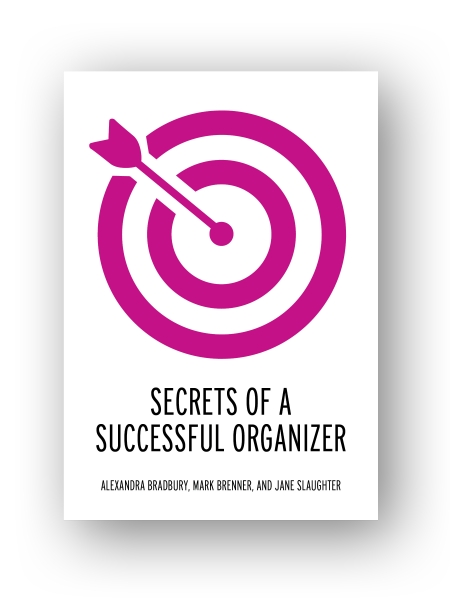
Are there problems where you work? Maybe your pay is too low, conditions are unsafe, or your boss has it in for someone you work with… and you’re ready to do something about it.
This book will show you how to fight back where you work and win. You’ll learn how to identify the key issues in your workplace, build campaigns to tackle them, anticipate management’s tricks and traps, and inspire your co-workers to stand together despite their fears.
We’ve distilled generations of organizing know-how into 47 easily accessible secrets. Put them all together and you’ve got a step-by-step guide to building power on the job.
This book is also available in Spanish.
Dear Activists: Your New Year’s Resolution Should Be to Throw a Better Party
Five ways to make your next protest more inviting and impactful.
Hey, activists: By building art and play into your work, you bring energy and fun to your movement and encourage stronger bonds among participants. Song, dance, and visual props make your direct actions memorable and inviting.
The Pacific Northwest-based Backbone Campaign trains budding activists on how to do that. Here are lessons from their Localize This! Action Camp:
1. Have a pre-protest planning party
Pre-event coordination invites people who can’t take part in the action to still be a part of the movement. And it lets participants get to know each other without the stress of protest day.
2. Do more than march
Bike, kayak, or rappel into your action. It’s high visibility, and by using different means of transportation, you’re also making a statement against our reliance on cars. Ask local rental shops to borrow equipment at discounted rates—better yet, invite them to get involved, too.
3. Get crafty
Wheat Paste Recipe
1. Combine 1 part flour and 4 parts water in a saucepan.
2. Heat to just below a boil until it’s the consistency you need it.
3. Whisk constantly to prevent clumping.
This has a shelf life of just a few days, so only make as much as you can use right away.
Papier-mache or inflatable puppets get your message seen above the crowd. They can become a mascot for your action and a defining feature in photos afterward. Get creative—but consider the weather.
How to Make a Papier-Mache Puppet
1. Use clay, foam, or bunched-up and taped plastic grocery bags to form the shape of your model.
2. Then, cover the form in plastic wrap to prevent your paper from sticking to it and layer strips of paper grocery bags dipped in paste to form the shell.
3. Cut the shell in half to remove it and papier-mache over the seam to fuse it together again. Add structural reinforcements as needed.
4. Use acrylic or water-based house paint and seal it with something waterproof for wear and tear.
5. Take a lesson from theater makeup and use high contrast colors for viewing at a distance.
6. When you’re marching for miles, weight is everything. Go for light materials and keep your puppets hollow.
7. Find an old external frame backpack and cut off everything but the shoulder straps. Mount your puppet to it with PVC pipes and zip ties so you can wear it instead of carrying it.
8. PVC pipes are your best friends for building on a budget. To create curves, use a heat gun and bend them once the pipes are malleable.
4. Have a post-protest deconstruction party
Municipal trash cans stuffed with protest signs are bad public relations. Recycle them. Invite participants to join you to disassemble props and make them available to allied movements.
5. Small direct actions count, too
If big demonstrations and marching shoulder to shoulder for miles isn’t your scene, get sneaky: Use light to project messages onto the sides of buildings. Get personal: Perform your own song with a portable speaker in a public space.
Make art about your movement and paste prints around town.
Outlawing War
Why “outcasting” works better than violence
After binge-watching the 18-hour PBS documentary series The Vietnam War, by Ken Burns and Lynn Novick, I was left emotionally emptied and ethically exhausted from seeing politicians in the throes of deception, self-deception and the sunk-cost bias that resulted in a body count totaling more than three million dead North and South Vietnamese civilians and soldiers, along with more than 58,000 American troops. With historical perspective, it is now evident to all but delusional ideologues that the war was an utter waste of human lives, economic resources, political capital and moral reserves. By the end, I concluded that war should be outlawed.
In point of fact, war was outlawed … in 1928. Say what?
In their history of how this happened, The Internationalists: How a Radical Plan to Outlaw War Remade the World (Simon & Schuster, 2017), Yale University legal scholars Oona A. Hathaway and Scott J. Shapiro begin with the contorted legal machinations of lawyers, legislators and politicians in the 17th century that made war, in the words of Prussian military theorist Carl von Clausewitz, “the continuation of politics by other means.” Those means included a license to kill other people, take their stuff and occupy their land. Legally. How?
By Michael Shermer Scientific American December 2017
War resistance, War Resisters League
Dear all,
We thought we’d take stock of some of the beautiful ways that the WRI network have been taking action this year against war and its causes, and in support of those who suffer because of militarism.
Stronger networks
In September, our Council met and - as well as spending a few days plotting and planning future WRI work - joined in with actions against DSEI, the London arms fair. We helped delay the set up of the fair considerably (see photo for two of our members blockading and entrance road and preventing vehicles from gaining access) and get a lot of mainstream media attention. Local campaigners said that WRI’s participation in the actions was ‘very welcome’, and that our ‘creative energy was much appreciated’.
In November, RAMALC - the antimilitarist network of Latin America and the Caribbean - gathered in Paraguay, and lots of our members all over the world also took part in the fourth annual International Week of Action Against the Militarisation of Youth, which included public events, media interviews and street actions.
New resources
In spring we launched our new website, which includes Empowering Nonviolence - an incredible resource (it’s been described as “the most beautiful antimilitarist website out there!”), which makes all WRI’s resources on nonviolence accessible more easily, for free. There’s content available in 14 languages so far (including the French edition of the Handbook for Nonviolent Campaigns.
War Resisters League December 18, 2017
Editor's picks
- Casino Sites Not On Gamstop
- Non Gamstop Casinos
- UK Online Casinos Not On Gamstop
- Migliori Siti Di Casino Online
- Best Casinos Not On Gamstop
- I Migliori Casino Non Aams
- Migliori Casino Non Aams
- Betting Apps UK
- UK Casino Not On Gamstop
- Non Gamstop Casinos
- Sites Not On Gamstop
- Casino Sites Not On Gamstop
- Non Gamstop Casino
- Non Gamstop Casino Sites UK
- Gambling Sites Not On Gamstop
- Casino En Ligne France
- Online Casinos
- Online Casinos Nederland
- Non Gamstop Casinos
- Casinos Not On Gamstop
- Betting Site
- Best Non Gamstop Casinos
- Non Aams Casino
- UK Casino Not On Gamstop
- Non Gamstop Casino UK
- Meilleur Casino En Ligne Belgique
- Migliori Siti Casino Non Aams
- Meilleur Site De Pari En Ligne
- Meilleur Casino En Ligne Français
- 익명 카지노
How Northwest Communities Are Stopping Big Oil Projects
“This is more fun than I’ve ever had in my life,” Don Steinke told me when I called him this month. Steinke, a retired science teacher, is a leader in the fight to stop what would be the nation’s largest oil-by-rail terminal. This month, the state agency in charge of reviewing the application voted unanimously to oppose the terminal — a vote that could spell the end of the project.
First proposed in 2013 by Vancouver Energy, the terminal would have been built along the Columbia River in Vancouver, Washington; 360,000 barrels of oil a day were to be brought by rail and then loaded on ships for transport to West Coast refineries. But the project quickly ran into local opposition.
The power of local organizing to stop this project got my attention. The opposition is fueled both by local impacts on water and air, and by the fact that building new oil-transport infrastructure is a terrible idea at a time when we must phase out the use of fossil fuel if we are to avert climate catastrophe.
By Sarah van Gelder YES! Magazine | Truthout News Analysis
December 11, 2017
What this shows is not that legal solutions aren’t valuable…but that they provide ample additional organizing opportunities.
By Shane Burley
How Peace Studies Can Help End Wars
Remarks by David Swanson at Peace and Justice Studies Association Conference in Birmingham, Alabama, October 28, 2017.
Thank you for inviting me. Can everyone who thinks that war is never, and can never be, justified please raise your hand. Thank you. Now if you think every war is always justified. Thank you. And finally all the moderates holding the balanced subtle middle ground: some wars are justified. Thank you. You may not be surprised to hear that this room is not typical of this country. Typical is for absolutely everyone to pile into that last group.
The relationship between peace and war is clearly not understood by the U.S. public as along the lines of that between alive and dead. Peace and war are things people imagine can coexist.
In Virginia, where I live, a school board member once said he would support recognizing the international day of peace as long as nobody misunderstood and thought he was opposed to any wars.
By David Swanson World Beyond War
Only Nonviolent Resistance Will Destroy Corporate State
Standing Rock and 20th century history offer crucial guidance: A movement’s success depends on organization, discipline and not being baited into violence.
by CHRIS HEDGES Truthdig October
Chris Hedges, George Lakey on Nonviolent Resistance to the Corporate State
Truthdig columnist Hedges and author-activist Lakey discuss the practical implementations, particularly when dealing with fascists and the economic elites.
by CHRIS HEDGES Truthdig October
Texas Activists Combine Social Media With Old-School Tactics to Resist Conservative Agenda
Intersectional movements are helping the left gain ground, not just play defense.
Who could resist images of smiling children gathered under an ancient oak tree on the grounds of the Texas Capitol, transfixed by Democrat and Republican lawmakers doing a tag-team recitation of Dr. Seuss’ The Lorax?
Apparently not the good folks of Texas.
A broad coalition of environmental activists employed just such a strategy during a special session of the Texas Legislature this summer as a way of stealing the spotlight and defeating a bill meant to strip municipalities of their power to protect historic trees.
Yes! Magazine October 10, 2017
ON VIOLENCE AND NONVIOLENCE: Charlottesville, Antifa,
and Beyond
-
Antifa in Theory and in Practice
“Fascists are divided into two categories: the fascists and the anti-fascists.”
– Ennio Flaiano, Italian writer and co-author of Federico Fellini’s greatest film scripts.
In recent weeks, a totally disoriented left has been widely exhorted to unify around a masked vanguard calling itself Antifa, for anti-fascist. Hooded and dressed in black, Antifa is essentially a variation of the Black Bloc, familiar for introducing violence into peaceful demonstrations in many countries. Imported from Europe, the label Antifa sounds more political. It also serves the purpose of stigmatizing those it attacks as “fascists”.
Despite its imported European name, Antifa is basically just another example of America’s steady descent into violence.
-
On Violent and Nonviolent Activism, the Media, Philando, and the G20 (and Charlottesville!)
-
No, Antifa, This is Not the 1930s and We Don’t Need to Punch a Nazi
-
To Punch or Not to Punch – The American Left’s Existential Crisis
-
Why Is the Media Promoting Antifa?
-
Chomsky: Antifa, Bringing Violence and Playing into the Alt-Right’s Hands
-
Chris Hedges | How ‘Antifa’ Mirrors the ‘Alt-Right’
-
Chris Hedges Responds to Criticism of ‘Antifa’ Column
-
The Anti-Capitalist Politics Of Antifa
-
Noam Chomsky: Antifa Is a ‘Major Gift’ to the Right
-
Chris Hedges | Diseases of Despair
-
Why Berkeley’s Battle Against White Supremacy Is Not About Free Speech
-
Boston: Thousands march in protest of controversial rally - CNN
-
Don’t feed the trolls — how to combat the alt-right
Using humor and creative tactics or overwhelming the alt-right with our sheer numbers is the best way to win, and for that nonviolent discipline is key.
Read on » by Kazu Haga Waging Nonviolence August 21, 2017
How movements dissolved Trump’s business councils
It wasn’t Trump or the CEOs who broke from him that caused the collapse of his advisory councils. It was the result of many movement actions over many years.
Read on »
by Daniel Hunter Waging Nonviolence August 21, 2017
ON VIOLENT AND NONVIOLENT ACTIVISM, THE MEDIA, PHILANDO, AND THE G20
The local news painted the cops as the good guys who prevented violence, whereas Unicorn Riot, an alternative media source that live-streamed the blocking of 94, which I watched, commented that not even a water bottle had been thrown.
By Sue Ann Martinson · July 10, 2017 · in Activism, capitalist system, International, Social movements
Marta Harnecker: Ideas for the struggle
The capitalist elites tend to achieve a significant hegemony over important popular sectors, a real cultural leadership over society; they have the capacity to ideologically subordinate the popular sectors, even those who are exploited by them. As Chomsky says, propaganda is to bourgeois democracy what the truncheon is to the totalitarian state.
From ‘A strategy for building the unity of the left’
The following text is made up of 12 articles that were first published in Venezuela in 2004 and that were slightly modified in 2016. They were written without a predetermined order in mind and I have preferred to maintain this order to facilitate discussion with my earlier readers. I recommend starting from the topic that most interests you and then reading the rest of the text. As it is impossible to develop all facets of an idea in two pages, only by reading the whole text will readers be able to fully understand each individual article.
Marta Harnecker
August, 2016
Introduction by the Editors at Old and New:
July 2016— When we asked Marta Harnecker whether it would be OK to post her “Ideas for the Struggle” (12 short articles about the left and the challenges it faces) on the Old and New website, with an invitation to revolutionary activists in the USA to discuss it, she said she would be delighted. But she also urged that we write an introduction explaining why a piece that was originally composed in 2004 is being reprinted today, with only a few modifications. That question, however, seems relatively easy: not much has changed on the revolutionary left since 2004 concerning the issues Harnecker is addressing in these notes. They have not been adequately discussed or resolved, far from it.
Another question also seems significant: Why do we think a text inspired by and considering the practices of the Latin American left will be helpful to revolutionaries in the USA? This should also be obvious to readers who take even a quick look at the topics Harnecker considers. Each one of her specific notes points to a significant difficulty for the left in the USA and other “advanced” nations too. The problems are not unique to Latin America.
Posted by Popular Resistance June 11, 2017
Resist? Resist! Why and How?
From time immemorial, persons who feel oppressed and/or ignored by the powerful have resisted those in authority. Such resistance often changed things, but only sometimes. Whether one considers the cause of the resisters to be virtuous depends on one’s values and one’s priorities.
In the United States, over the past half-century, there emerged a latent resistance to what was seen as oppression by “elites” who enacted changes in social practices offensive to certain religious groups and ignored rural populations and persons whose standards of living were declining. At first, resistance took the path of withdrawal from social involvement. Then it took a more political form, finally taking on the name of Tea Party.
The Tea Party began to have some electoral successes. But it was dispersed and without a clear strategy. Donald Trump saw the problem and his opportunity. He offered himself as a unifying leader of this rightwing “populism” and catapulted the movement into political power.
What Trump understood is that there was no conflict between leading a movement against the so-called Establishment and seeking power in the state via the Republican Party. On the contrary, the only way he could achieve his maleficent objectives was to combine the two.
The fact that he succeeded in the world’s strongest military power heartened like-minded groups all across the world, who proceeded to pursue similar paths with steadily increasing numbers of adherents.
Trump’s success is still to this day not understood by the majority of leaders of both U.S. mainstream parties who search for signs that he will become what they call “presidential.” That is to say, they want him to abandon his role as the leader of a movement and confine himself to being the president and leader of a political party.
They seize upon any small sign that he will do this. When he softens his rhetoric for a moment (as he did in his February 28 speech to Congress), they do not understood that this is precisely the deceptive tactic of a movement leader. Instead, they feel encouraged or hopeful. But he will never give up his role as movement leader because the moment that he did this he would lose real power.
In the past year, faced with the reality of Trump’s success, a counter-movement has emerged in the United States (and elsewhere) that has taken on the name of Resist. The participants understood that the only thing that can possibly contain and eventually defeat Trumpism is a social movement that stands for different values and different priorities. This is the “why” of Resist. What is more difficult is the “how” of Resist.
The Resist movement has grown with remarkable rapidity into sometimes impressive enough that the mainstream press has begun to report its existence. This is the reason that Trump constantly inveighs against the press. Publicity nourishes a movement, and he is doing what he can do to crush the counter-movement.
The problem with Resist is that it is still at the stage where its many activities are dispersed and without a clear strategy or at least not a strategy they have yet adopted. Nor is there any unifying figure who is able at this point to do what Trump did with the Tea Party.
Resist has engaged in manifold different actions. They have held marches, challenged local congressional representatives in their public meetings, created sanctuaries for persons menaced with state-ordered expulsions, interfered with transport facilities, published denunciations, signed petitions, and created local collectivities that meet together both studying and deciding upon further local actions. Resist has been able to turn many ordinary persons into militants for the first time in their lives.
Resist however has a few dangers before it. More and more participants will be arrested and jailed. Being a militant is strenuous and after a while many people tire of it. And they need successes, little or big, to maintain their spirits. No one can guarantee that Resist will not fade away. It took the Tea Party decades before they got to where they are today. It may take Resist equally long.
What Resist as a movement needs to keep in mind is the fact that we are in the midst of a historic structural transition from the capitalist world-system in which we have lived for some 500 years to one of two successor systems – a non-capitalist system that preserves all of the worst features of capitalism (hierarchy, exploitation, and polarization) and its opposite, a system that is relatively democratic and egalitarian. I call this the struggle between the spirit of Davos and the spirit of Porto Alegre.
We are living in the chaotic, confusing situation of transition. This has two implications for our collective strategy. In the short run (say, up to three years), we must remember that we all live in the short run. We all wish to survive. We all need food and shelter. Any movement that hopes to flourish must help people survive by supporting anything that minimizes the pain of those who are suffering.
But in the middle run (say 20-40 years), minimizing the pain changes nothing. We need to concentrate on our struggle with those who represent the spirit of Davos. There is no compromise. There is no “reformed” version of capitalism that can be constructed.
So the “how” of Resist is clear. We need collectively more clarity about what is happening, more decisive moral choice, and more sagacious political strategies. This does not automatically come about. We have to construct the combination. We know that another world is possible, yes, but we must also be aware that it is not inevitable.
TowardFreedom.com
Nonviolent Revolution Resources Center
Universalizing resistance and democratizing power are critical in the fight to protect our rights and the rights of targeted groups and individuals in the United States and abroad. Nonviolent direct action continues to be an effective way to create change from the bottom-up by putting pressure on government entities, corporations and individuals threatening our lives through the destruction of our ecology and the erosion of democracy.
This page is a compilation of resources meant to empower grassroots democracy organizers with useful information, strategies and contacts to help in creating action plans and obtaining nonviolent direct action training tools. To add to these resources, please contact us.
Includes sections on Non-Violent Action Training, Strategic Planning, Know Your Rights (immigrants, activists, youth, unhoused, in several languages), cybersecurity, protest laws, and more.
Liberty Tree Foundation for the Democratic Revolution
Not Your Grandma’s Civil Rights Strategy
Whose Streets? (Then and Now)
In response, will activism translate into concrete results the way it once did? Surely, a new generation of organizers now rising with a resolve and passion not seen in years, having broadened the civil rights project into a human rights one, will develop new strategies. Surely, they will discover or invent new means of stopping what threatens to be a contraction of democracy. Surely, with the power of social media — a veritable television station in the hands of every citizen — they will find their own ways of ensuring that oppression can’t dodge the spotlight. Already, the bottom-up strategy championed by SNCC has found new fluency in the ascendance of hyper-democratic Internet organizing and the raw eloquence of #BlackLivesMatter.
By Jon Else Tom Dispatch March 26, 2017 Rise Up Times March 28 2017
The Way Between By Rivera Sun
In an exciting blend of action, adventure, and fantasy author Rivera Sun boldly takes the genre in a new direction . . . that of waging peace, active nonviolence, and nonviolent movements. Challenging war cultures and military societies, The Way Between brings the skills of resolving conflict, anti-bullying, and ending violence into a coming of age story for a new generation of readers. Between flight and fight lies a mysterious third path called the Way Between, and young shepherdess and orphan Ari Ara must master it . . . before war destroys everything she loves!
Author/Activist Rivera Sun is the author of The Dandelion Insurrection and other novels, and the cohost of Love (and Revolution) Radio. She is also a trainer for Campaign Nonviolence and Pace e Bene. Her essays on social justice movements are syndicated on PeaceVoice and appear in Counterpunch, Truthout and Popular Resistance. www.riverasun.com
If you have not picked up the book yet, you can purchase it here: http://www.paceebene.org/shop/the-way-between/
Pace e Bene March 23, 2017
Get Involved with Campaign Nonviolence
Campaign Nonviolence is a long-term movement for a culture of peace and nonviolence free from war, poverty, racism, environmental destruction and the epidemic of violence.
Here’s what we’re doing this year! Also, be sure to see our CNV Tools and Resources section below for help building Campaign Nonviolence!
Visit our CNV Actions page to learn more!
Nonviolent Cities is not about creating an ideal or utopian city, but a city where nonviolent principles, methods and options are increasingly available to create just, peaceful and sustainable solutions in our communities and our world. Click here to learn more!
Nonviolence education is key to long-term change by spreading the tools of nonviolent transformation and by training both advocates for change and the larger society. Visit the Nonviolence Training Hub today – find a training – post a training – help us grow the 1000 Trainings Project!
Creating a culture of peace and nonviolence requires grappling with violence and injustice systemically. War, poverty, racism, environmental destruction and innumerable forms of violence and injustice are interrelated realities – and will only be solved comprehensively. 2017 CNV Action Week.
To build the capacity of this movement, Campaign Nonviolence offers numerous resources to support your organizing for nonviolent change, including books, trainings and workshops, social media, and many tools on this website for mainstreaming nonviolence, connecting the dots between issues and movements and building your campaign. Speakers Bureau features a range of powerful speakers who are available to speak in your community click here.
What do we need to do to generate the people power necessary to dismantle systemic violence and to create a vibrant nonviolent culture? Dr. Erica Chenoweth, the co-author of Why Civil Resistance Works, offers a clue. To support this movement-building, here are some of the things we encourage people everywhere to do.
Take the Campaign Nonviolence Pledge – and spread it in your community, organization, or social network.
Organize or join a local CNV affinity group. Engage: Exploring Nonviolent Living!
Become a CNV Action Organizer. In 2017, CNV will identify and recruit organizers, who make a commitment to planning a CNV Action during the Week of Actions, Sept 16-24, 2017! Sign up on our Actions page here!
Promote CNV organizational endorsements. Over 200 national and local organizations have endorsed Campaign Nonviolence. Ask your organizations to officially endorse CNV—and then help them promote it to their members and networks. Click here for information.
For an overview of Campaign Nonviolence from the past three years, see our CNV 2014 Booklet PDF, our CNV 2015 Booklet PDF and our CNV 2016 Booklet PDF.
NONVIOLENT ACTION: A QUICK SUMMARY
“There is a very wide range of methods, or forms of nonviolent action, and at least 125 have been identified. They fall into three classes:
Nonviolent protest:
Methods are symbolic in their effect and produce an awareness of the existence of dissent. Under tyrannical regimes, however, where opposition is stifled, their impact can in some circumstances be very great. Methods of nonviolent protest include marches, pilgrimages, picketing, vigils, ‘haunting officials’, public meetings, issuing and distributing protest literature, renouncing honours, voluntary emigration, and humorous pranks.
Nonviolent non-cooperation:
If sufficient numbers take part, they are likely to present the opponent with difficulties in maintaining the normal efficiency and operation of the system; and in extreme cases the system itself may be threatened. Methods of nonviolent non-cooperation include various types of strikes, various types of boycotts and various types of political non-cooperation.
Nonviolent intervention:
These methods share some features in common with the first two classes, but also challenge the opponent more directly; and, assuming that fearlessness and discipline are maintained, relatively small numbers may have a disproportionately large impact. Methods of nonviolent intervention include sit-ins, fasts, reverse strikes, nonviolent obstruction, nonviolent invasion, and parallel government.”
— Gene Sharp – The Technique of Nonviolent Action
Posted by Pace e Bene Campaign Nonviolence March 15, 2017
RESIST DAY #50: What You Can Do Today
Resistance in your community, across the country, and around the globe
By Common Dreams staff March 10, 2017
The spread of public protests against the new regime’s immigration ban and other initiatives is heartening to those who oppose these measures. Yet, protest by itself doesn’t create a movement. Spending one’s days reacting to Donald Trump’s misstatements, prejudices, and cruelties risks repeating the mistakes of the presidential campaign, when the country split 50-50, more or less, and a right-wing populist appeal aimed primarily at working class Americans generated an electoral vote majority for the Tweeter-in-Chief. Outrage provoked by Trump’s character, rhetoric, and behavior is inevitable. Even so, this is a time for hard thinking and conversation, not just outraged action. (This is the point of Slavoj Zizek’s 2015 video, “Don’t act, just think.” Take a look at it at https://www.youtube.com/watch?v=FLOTi2498xg.)
By Richard Rubenstein, www.warisacrime.org Popular Resistance
February 28th, 2017
The Guardian is launching a new project that will aim to cover a diverse range of new activism.
Rise Up Times February 27, 2017
10-POINT ACTION PLAN TO STOP TRUMP
Reader Supported News Rise Up Times February 23, 2017
What We Do Now
“What We Do Now: Standing Up for Your Values in Trump’s America”
A book edited by Dennis Johnson and Valerie Merians
“The Trump Survival Guide: Everything You Need to Know About Living Through What You Hoped Would Never Happen”
A book by Gene Stone
Published in the days leading up to the 45th president’s inauguration, two new books purport to show a path forward for liberals in Trump’s America. “What We Do Now” is a collection of essays from lefty luminaries — legislators, academics and activists “announcing themselves as the new American resistance movement,” as the introduction declares. “The Trump Survival Guide,” its lesser ambitions clear from its title, warns of the damage Trump might inflict and offers suggestions for how individuals can cope and push back.
Reviewed by Carlos Lozada Truthdig February 10, 2017
We’re Still Not There: A Practical Guide to Resistance
Turns out Black History took more than a month? Ashley Nicole Black investigates.
Full Frontal with Samantha Bee | TBS February 15, 2017
TO HALT THE SLIDE INTO AUTHORITARIANISM, WE NEED A GENERAL STRIKE
…most Americans have no knowledge of the history of the general strike in their own country, let alone familiarity with how it might work today.
By The Shutdown Collective Truthout | Report February 11, 2017
On appeal, not only did the Ninth Circuit rule 3-0 against Trump, but they also chided him on his lack of understanding of the checks and balances of the Constitution.
· February 11, 2017
It may only take 3.5% of the population to topple a dictator–with civil resistance, by Erica Chenoweth
Nonviolent resistance has empowered the labor movement, closed down or cancelled dozens of nuclear plants, protected farm workers from abuse in California, motivated the recognition of Aids patients as worthy of access to life-saving treatment, protected free speech, put climate reform on the agenda, given reprieve to Dreamers, raised awareness about economic inequality, changed the conversation about systemic racism and black lives and stalled construction of an oil pipeline on indigenous lands in Standing Rock.
The biggest obstacle to a truly global peace movement may actually be the structures upon which we’ve leaned for so long . . . . By Joe Scarry Joe Scarry’s Blog December 28, 2016 A globally connected peace movement? To learn more about Rise Up Times and support Media for the People! with a donation click […]
Joe Scarry JoeScarry Blog December 28, 2016
Use our ground-breaking tool to write and send your own letter to the editor.
Popular Resistance January 18, 2017 Read more by clicking the title link.
![]()
Published on Jan 7, 2017
What Happens After the Women’s March?
What comes after the women’s march against Donald Trump? That’s the question a woman asked Micah White, a co-creator of the Adbusters campaign that launched Occupy Wall Street.
“I’m not that interested in the march itself but in what comes afterwards,” the woman said. After the failures of the 2003 marches against the Iraq War, Occupy Wall Street and Black Lives Matter to win substantive policy changes, White wrote his new book, “The End of Protest,” to address the question of “what comes afterwards.”
“Without a clear path from march to power,” White writes in The Guardian, “the protest is destined to be an ineffective feelgood spectacle adorned with pink pussy hats. … it is all too easy to succumb to the false hope that a big splash is a transformative tsunami. … raising awareness and getting media attention is never enough. Frankly, neither brings the people closer to sovereign power.”
Today’s social activists have succumbed to one of the most enduring myths of contemporary American protest: the comforting belief that if you can get enough people into the streets from diverse demographics, largely unified behind a clear message, then our representatives will be forced to heed the crowd’s wishes.
If this story has ever been true, and I’m not so sure it has, then it hasn’t been the case since 1963, when 250,000 people marched on Washington for “jobs and freedom” and heard Martin Luther King Jr deliver his I Have a Dream speech. Less than a year later, the Civil Rights Act of 1964 banned discrimination based on “race, color, religion, sex or national origin” in employment and housing.
But let’s be real: there are countless counter-examples of marches on Washington that failed: the 1913 march of women to demand the right to vote, the 1978 march for the Equal Rights Amendment, the 1986 Great Peace March for Global Nuclear Disarmament, the Million Man March of 1995, the 2004 March for Women’s Lives, the inauguration protests against George W Bush’s second term in 2005 … the list is practically endless. Activists have a tendency to ignore repeated failure in favor of overemphasizing one or two anomalous minor victories.
The absolute failure of the 15 February 2003 anti-war protest, the largest synchronized global march in human history, was the last gasp of this tactic. Today’s nominally democratic governments would be more concerned by the absence of our marches, as that might suggest something darker is in the works.
The only way to make a government do what one wants is to win elections or win wars, White continues. “Either we can march to the ballot box or the battleground; there is no third option.”
Right now, in America, there is no pro-democracy anti-establishment party that is capable of stepping forward, seizing power and governing. America needs a protest movement like Spain’s Podemos, Iceland’s Pirate Party or Italy’s Five Star Movement. These populist democratic movements are the prototype for the future of protest. Each has achieved surprising electoral victories in a short time, but what is more important is how they are changing the way power functions. …
The number one challenge standing in the way of an effective protest in America today is the inability of our social movements to actually govern. There might be a slight chance our protests could oust Trump, but there is no chance that our present-day movements could govern at all, let alone effectively.
That is because leaderless protesters don’t know how to make complex decisions together as movement. Occupy couldn’t even come up with its one demand.
Now we are seeing this capacity slowly develop among protest movements in Europe. However, until we can replicate their successes in America, the people will never be able to take back sovereignty and our protests remain an exercise in infantile futility.
And that is the great gift that the Women’s March on Washington could give us. May the angry women return home the day after the march to lead us toward a women-led hybrid movement-party in every state that is disciplined enough to govern, militantly local and single-mindedly devoted to actualizing a force capable of seizing control of city councils and mayorships during midterm elections across America in preparation for an electoral coup against the presidency in 2020.
—Posted by Alexander Reed Kelly Truthdig January 21, 2017 Read more by clicking the title link.
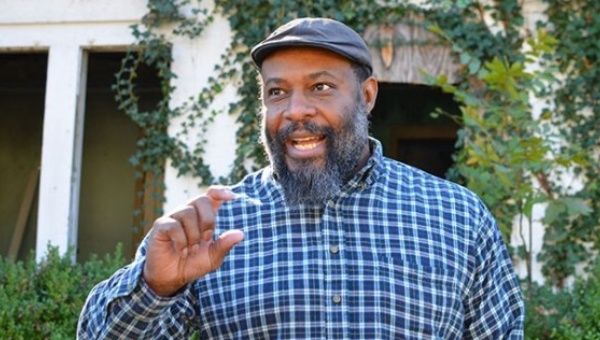
Activist and organizer Kali Akuno, co-founder of Cooperation Jackson | Photo: Cooperation Jackson
After years of organizing with the Malcolm X Grassroots Movement, Kali Akuno served as Director of Special Projects for the Black Nationalist mayor of Jackson, Mississippi, Chokwe Lumumba. He was also co-director of the US Human Rights Network, and co-founder of the School of Social Justice and Community Development, a public school serving the academic needs of low-income African American and Latino communities in Oakland, California. He is currently the co-director of Cooperation Jackson, a network of worker cooperatives fighting to create economic democracy in Jackson, Mississippi. He also helped create Ungovernable 2017, a movement dedicated to organizing nation-wide resistance to the Trump administration, beginning on inauguration day.
1. What are your thoughts on the multiple counter-inaugural events being planned? What might that organizing process tell us about how resistance might be organized going forward?
telesur January 19, 2017 Read more by clicking the title link.
Above Photo: From socialistproject.ca
The profound defeat of the U.S. labour movement over the past three to four decades is usually measured by the loss of things that workers once took for granted like decent wages and benefits. A less quantifiable but ultimately more decisive indicator is the retreat from possibilities. By extension, the labour movement’s renewal (or reinvention) is inseparable from reversing, through effective struggle, this lowering of expectations. Jane McAlevey captured this sentiment in the title of her first book, Raising Expectations (and Raising Hell), a memoir based on her experiences as a labour organizer.
By Sam Gindin, www.socialistproject.ca Popular Resistance January 10, 2017
We hope you will take this document and use it however you see fit.
Rise Up Times January 8, 2016
Movement For Black Lives Call To Action
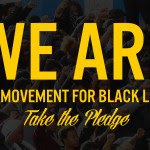 By Movement for Black Lives. As we enter 2017 , under an administration motivated by hate and greed, we renew our commitment to you, and to our fight for justice. We know that Black people have always made a way, even when the odds were against us – as they are now. An administration full of racist, sexist, fear mongers are moving into the White House – and we should all be concerned about their potential impact on our lives. We are just beginning to see the effects of the fear and violence they support. In the last 30 days, we’ve seen an increase in hate crimes and hate speech against Black people, the vandalizing of Black churches, and vigilantes taking up arms in our communities to incite violence and fear. In the face of all this, millions of Black folks across the country are asking, “What can we do?” -more-
By Movement for Black Lives. As we enter 2017 , under an administration motivated by hate and greed, we renew our commitment to you, and to our fight for justice. We know that Black people have always made a way, even when the odds were against us – as they are now. An administration full of racist, sexist, fear mongers are moving into the White House – and we should all be concerned about their potential impact on our lives. We are just beginning to see the effects of the fear and violence they support. In the last 30 days, we’ve seen an increase in hate crimes and hate speech against Black people, the vandalizing of Black churches, and vigilantes taking up arms in our communities to incite violence and fear. In the face of all this, millions of Black folks across the country are asking, “What can we do?” -more-
Popular Resistance January 9, 2016
While some people are calling 2016 the worst political year ever, we are optimistic that the movement is on track for transformational change.
Rise Up Times Popular Resistance January 3, 2017
The sixties produced a conviction that “democracy is in the streets.” The Trump era may echo that. Protest against Donald Trump. (photo: Jim Vondruska/NurPhoto/Getty Images) By Jelani Cobb The New Yorker RSN January 1, 2017 n December 6th, less than a month after the election, Vice-President Joe Biden, who was in New York to receive […]
Rise Up TImes Popular Resistance January 2, 2017
FLOWERS AND ZEESE | MILITARISM AND VIOLENCE ARE SO YESTERDAY: IT’S TIME TO MAKE PEACE THE REALITY
Our task at this stage is cooperation, or as David Korten writes, to go from “violent domination” to “peaceful partnership.” To accomplish this, we will have to shift from a militaristic society to a culture of nonviolence. This will have to be done with intention.
By Margaret Flowers and Kevin Zeese Truthout | Opinion November 20, 2016
December 27, 2016 by
Henry Giroux, AGAINST NORMALIZING AUTHORITARIANISM—The United States has tipped over into a full blown government run by extremists. Any talk of working with a president who has surrounded himself with militarists, racists, neo-fascists, anti-intellectuals, and neoliberal fundamentalists should be resisted at all cost. Normalization is simply a retreat from any sense of moral and political responsibility.
The word and any reference supporting it should be seen as an act of political complicity with authoritarianism and condemned outright. The United States has morphed into an alliance of dreadful fundamentalisms that extend from the economic and military to the educational and ideological. This is the script for war, militarization, the destruction of the welfare state, the elevation of finance capital and state violence to the center of politics, and the death of the very ideal of democracy.
Every element of resistance from debunking policies, offering resources for an informed citizenry, creating study groups, inspiring others to resist, engaging in constant acts of civil disobedience, creating thousands of alternative educational outlets, and endless demonstrations have to be used to develop and sustain a militant sense of hope, resistance, and social engagement.
We need to light up the darkness overcoming the U.S. with the collective anger and resistance by those who want a radical democracy, who reject the deeply violent registers of militarism, finance capital, and exclusion. America is at war with itself and it is time to prepare for a battle in which all of humanity is at stake. The rhetoric of fascism has become normalized and is organized around a collapse of civic literacy and the inability to deal with complex issues on one hand and the attempt by those who maintain power to ruthlessly promote a depoliticizing discourse of lies, simplicity, and fear.
Memory has no home in the culture of fear and produces a moral vacuity tied directly to the extreme violence that now saturates American society. Violence is both symbolic and material and we need to push back not just by brave and tireless individuals who are outraged but through a social movement for democratic socialism that unifies diverse groups in the name of economic and social justice.
Facebook, December 22, 2016 https://www.facebook.com/henry.giroux.3
PEOPLE ARE IN THE STREETS PROTESTING DONALD TRUMP. BUT WHEN DOES PROTEST ACTUALLY WORK?
Here I offer up 10 established social science insights about unarmed dissent that everyone should know.
Recent data from around the world suggest that popular action is here to stay. In particular, civil resistance — where unarmed civilians confront opponents using protests, strikes, boycotts, stay-aways and other forms of nonviolent contention — is the most common form of struggle today.
The United States’ own recent tumult is part of this global resurgence of civil resistance, as Maria Stephan and I argued at the Monkey Cage in January. And yet, this resurgence is commonly misunderstood or misrepresented. Here I offer up 10 established social science insights about unarmed dissent that everyone should know.
By Erica Chenoweth Peaceworker December 18, 2016
Our responsibility is to resist, resist and transform.
December 12, 2016 Posted by Popular Resistance
Trump Silver Lining: People Are Organizing

100 Days of Peace and Justice
Here’s a specific suggestion, recently offered by a friend: as Donald Trump follows his inauguration on January 20 with 100 days of revealing to us what his administration’s agenda is going to be, let us begin 100 Days of Peace and Justice during which we reveal what our agenda is going to be. Never in the history of the world has there been a leader who was able to govern without the cooperation – or at least the acquiescence – of the governed. Let us make it clear that we will only accept governance that meets our needs and aspirations. Under the umbrella of 100 Days of Peace and Justice we can speak with a unified voice on all the issues we care about by demonstrating what we want and resisting what we do not want. Initiate projects that fire your enthusiasm and refuse cooperation with those that do not represent you. No overall coordination is required. As the overused slogan says: Just do it. more-
By Peter Bergel for Peaceworker. Posted by Popular Resistance December 12, 2016
Hegemony How-To: A Roadmap for Radicals — available for preorder
“As the world faces the horrors of a Trump presidency, many good people are asking, ‘What can I do?’ Jonathan Smucker’s book provides an urgent field manual for answering that question.” —Jeremy Scahill
Beyond the Choir November 16, 2016
America’s past truth and reconciliation processes show us what works.
Fighting Back Against the White Revolt of 2016
There is a new populism that demands a people’s agenda, which defines how we would confront the multiple crisis issues the country faces.
Online Course | “Civil Resistance Unpacked: Strategic Practice and Analysis”
Apply by Dec 4 for Online Course on Civil Resistance
ICNC is pleased to announce a call for applications for a special online course entitled “Civil Resistance Unpacked: Strategic Practice and Analysis.”
This new, participant-driven course is being offered in response to increasing demand for knowledge on civil resistance. For this particular learning experience, preference will be given to US-based applicants, but candidates from other countries with prior civil resistance knowledge and/or experience are encouraged to apply as well.
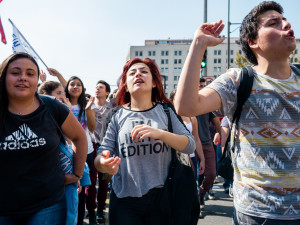
This course will provide an advanced, in‐depth and multi‐disciplinary perspective on civilian‐based movements and campaigns that can win and defend fundamental rights and justice with the use of nonviolent tactics and strategies.
The course will take place on ICNC’s online learning platform (civilresistancestudies.org) for admitted participants starting on December 6. An orientation webinar, offered on December 7, will guide participants through signing up, logging in, interacting in the online space, and getting the most out of the online learning experience.
All course materials – primarily readings and videos – will be provided free-of-charge to admitted participants.
Click here to apply
The application deadline is Sunday, December 4, 2016 at 11:59 pm ET.
(We aim to inform candidates of the status of their applications by December 5)
Why is ICNC offering this online course?
ICNC has received rapidly increasing demand for knowledge and greater understanding of the dynamics and power of civil resistance around the world in last several years. Various individuals, groups and organizations in the US and abroad are reaching out to us in record numbers to inquire about civil resistance learning opportunities. However, we do not have the staff capacity to respond to all these requests, and online courses provide a way for us to achieve greater scale and reach more people in our efforts.
Building on a recent ICNC online course offered in partnership with Rutgers University, the “Civil Resistance Unpacked: Strategic Practice and Analysis” online course offers modules on civil resistance with a variety of readings and videos that guide participants in their learning, online discussions, and interactions. Activists, organizers, scholars, students, members of the policy community and NGOs, journalists, and others with some previous experience with and knowledge about civil resistance are all sure to find great theoretical and practical value in taking this course.
As ICNC is offering this course on short notice, we have drawn content from the recent ICNC-Rutgers online course and turned it into a self-standing, participant-driven course.
What is meant by “participant-driven” course?
The main difference between this course and our previous online seminars is in the way that online interactions are envisaged to take place. Civil Resistance Unpacked will be an entirely participant-driven course whereby, after reviewing relevant modules, participants will interact with one another on various forums without additional ICNC moderation or substantive input. In that sense, participants will be part of a learning community that is built around participants’ motivation, open attitude to learning, desire to share and interact with others, and relevant knowledge and experience.
Important Information about Prospective Applicant Profiles, Learning Community Guidelines, Code of Conduct & Participants’ Commitment
- Who should apply
- Participating in an online learning community
- Code of conduct of the learning community
- Participant time and activity commitment
About the Online Course, Its Goals, Content and Schedule
- Course description
- Course goals
- Course content and schedule
- Apply
WHO SHOULD APPLY
ICNC plans to admit up to 50 highly motivated participants who commit to reviewing course content, contributing in writing to discussion forums, and engaging with other participants in insightful exchanges around ideas presented in course materials. We are looking for people who have strong motivation and who are willing to engage with other participants and share their knowledge and experience with nonviolent movements and campaigns.
We encourage US- and non-US based scholars, educators, field practitioners (i.e. activists and organizers), members of civil society, policy professionals, and journalists to apply to take this course. For this particular course, preference will be given for US-based applicants.
Anyone who applies must be willing to commit to the time and activity requirements and code of conduct for the course, both outlined below.
PARTICIPATING IN AN ONLINE LEARNING COMMUNITY
 Once admitted to the online course participants will form a learning community, whose intellectual strength and vibrancy will depend solely upon its members and their active and insightful written contributions (posts) in various forums. No outside moderators will join this class and no moderation will be offered. A specific set of questions set up in advance by course administrators in the discussion forums will guide participants’ exchanges. In these forums, participants are expected to monitor and read other learners’ posts, share innovative ideas and thoughts within the learning community, ask follow-up questions to other participants, suggest answers and plausible solutions as well as, in rare cases, flag any inappropriate behavior on the forums.
Once admitted to the online course participants will form a learning community, whose intellectual strength and vibrancy will depend solely upon its members and their active and insightful written contributions (posts) in various forums. No outside moderators will join this class and no moderation will be offered. A specific set of questions set up in advance by course administrators in the discussion forums will guide participants’ exchanges. In these forums, participants are expected to monitor and read other learners’ posts, share innovative ideas and thoughts within the learning community, ask follow-up questions to other participants, suggest answers and plausible solutions as well as, in rare cases, flag any inappropriate behavior on the forums.
For more information about the structure of the seminar and the Code of Conduct, go to the website here.
ICNC November 2016
No way around it, this is one frightening moment. Decades of progress created with sweat and determination face destruction.
Rise Up Times GregPalast.com November 23, 2016
1000 NONVIOLENCE TRAININGS PROJECT
WHAT IS THE 1000 NONVIOLENCE TRAININGS PROJECT?
The 1000 Nonviolence Trainings Project is a new and collaborative initiative to connect nonviolence trainings around the world and highlight the tens of thousands of people being trained in nonviolence in service to a more just and peaceful world. We invite you and your organization to join this historic venture!
So far we have reached 722 trainings this year towards our goal of 1000 Nonviolence Trainings in 2016!
It is our belief that nonviolence needs to become a more prominent part of mainstream thinking and needs to become as credible in the public’s mind as violence is now. By launching a program that identifies, connects and promotes nonviolence trainings around the world, we believe we can make all of our work more newsworthy, more credible and more attractive to those who have not considered themselves part of a larger nonviolent movement. This effort will also help people find and attend trainings in their area.
We invite you and your organization to:
- Add your name/organization to the 1000 Nonviolence Trainings Project as a supporter by emailing us at [email protected]. We’ll include your name on this page below with other long-time trainers and supporters.
- Post your trainings on the 1000 Nonviolence Trainings Project website here. Be sure to promote your trainings as part of the 1000 Nonviolence Trainings Project on your website and other publications.
– Click here to use the logo (see right) and find other publicity information. - Join our Facebook discussion group and connect with nonviolence trainers around the world. Click here to join!
- Spread the word throughout your networks and via social media
The 1000 Nonviolence Trainings Project will encompass a spectrum of trainings for nonviolent change, including nonviolent action, strategic movement building, peacebuilding and restorative justice, anti-racism, peaceful parenting, trauma healing, nonviolent communication (NVC), the spirituality and practice of nonviolence and more.
Transforming the massive global challenges we face today—including perennial war, racism, poverty, environmental destruction and all forms of violence and injustice—requires powerful movements for change. The 1000 Nonviolence Trainings Project exists to support the preparation, organization and collaboration to build and sustain these movements.
We invite you and your organization to join the 1000 Nonviolence Trainings Project today. If you have any questions feel free to contact us at: [email protected]
The Nonviolence Training Hub
Teaching After the Election of Trump
As we have tried to make sense of this election and what it means for educators and our students, we have asked ourselves, “What would Howard Zinn say?”
Teaching People’s History Zinn Education Project November 15, 2016
WE ONLY MOVE FORWARD WHEN WE DEMAND THE IMPOSSIBLE: AN INTERVIEW WITH BILL AYERS
“We know what we’re fighting against, but what are we fighting for?”
By Alice Kim Rise Up Times Truthout Interview October 2, 2016
No-Fly, Safe and Humanitarian Zones — in the United States, Not Syria
The slaughter in Syria, with its terrible consequences in that country, the region and worldwide, demands urgent action to end the horrific human suffering. Unfortunately, some well-intentioned, concerned people advocate ratcheting up US military engagement, which could lead to more death, destruction and suffering, not less. There are several reasoned refutations of supposed humanitarian intervention proposals, such as a no-fly zone (promoted by some during the presidential election campaign), safe zones and humanitarian zones.
In the wake of the election and President-elect Donald Trump‘s appeals to xenophobia, racism, misogyny and fear, no-fly, safe and humanitarian zones do have applicability, but in the United States, not Syria.
By Kevin Martin Speakout by Truthout | Op-Ed November 18, 2016
The people who run America have constructed a political system that’s like a glitchy killer robot, one even they can’t control anymore.
Rise Up Times November 13, 2016 From The Intercept
How do citizens counter corruption and exact accountability from power holders?
November 14, 2016 · by
MICHAEL NAGLER | THE KAPP PUTSCH AND MODERN MEMORY
Nonviolence is the way out. But nonviolence cannot simply mean you wait for the putsch to happen, then rush out into the street and non-cooperate.
November 11, 2016 · by
Making or Breaking Nonviolent Discipline in Civil Resistance Movements
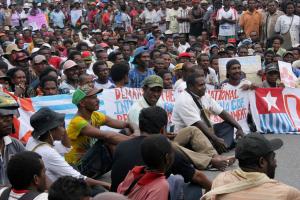
How can we understand when nonviolent movements will stay nonviolent? When are they likely to break down into violence? In this monograph, Jonathan Pinckney analyzes both what promotes and undermines nonviolent discipline in civil resistance movements. Combining quantitative research on thousands of nonviolent and violent actions with a detailed comparison of three relevant case studies of civil resistance during the “Color Revolutions”, Pinckney’s analysis provides important lessons for activists and organizers on the front lines, as well as for practitioners whose work may impact the outcomes of nonviolent struggles. We learn how repression consistently induces violence, as do government concessions. On the flip side, we see that structuring a campaign in an inclusive and non-hierarchical way is conducive to greater nonviolent discipline.
Jonathan Pinckney, WEBINAR Tuesday, January 17, 2017 at 12 p.m. EST
ICNC webinars are a convenient way to learn more about civil resistance and integrate it into your work, whether you are:
- An academic looking to incorporate educational videos on civil resistance into your classes and cite them in your research;
- A journalist looking for the insights into civil resistance movements around the world;
- A member of the general public interested in learning about specific 20th and 21st century movements and campaigns in an informed and engaging way.
Civil Resistance against Democratically-Elected Governments
 Due to the remarkable successes of civil resistance in legitimate pro-democracy struggles against autocratic governments, increasing numbers of political parties/coalitions in polarized societies are using many of its tactics to attempt to oust democratically-elected governments which have fallen into disfavor with a significant portion of the population […]
Due to the remarkable successes of civil resistance in legitimate pro-democracy struggles against autocratic governments, increasing numbers of political parties/coalitions in polarized societies are using many of its tactics to attempt to oust democratically-elected governments which have fallen into disfavor with a significant portion of the population […]
Dr. Stephen Zunes ICNC October, 27, 2016
KEN BUTIGAN, A NEW BOOK | NONVIOLENT LIVES! PEOPLE AND MOVEMENTS CHANGING THE WORLD
“These stories of the lives of ordinary people remind us of the power of love to transform and transcend suffering and injustice…”
– Mairead Corrigan Maguire, Nobel Peace Prize Winner
Pace e Bene Nonviolence Service
Dr. King’s Letter from Birmingham Jail: Lessons for Civil Resistance Movements
Dr. Tom Hastings International Center on Nonviolent Conflict
January 15, 2016
+++
CHRIS HEDGES AND TAVIS SMILEY DISCUSS POPULAR RESISTANCE AND THE FAILURE OF MAINSTREAM MEDIA
“We have to build popular movements to push back,” Hedges declared, “because the system itself is not going to respond.”
Chris Hedges speaking to Tavis Smiley via video. (Screen shot via PBS)
Rise Up Times Truthdig November 1, 2016
ON CONTACT | CHRIS HEDGES DISCUSSES RESTRAINED RESISTANCE WITH BILL AYERS (VIDEO)
Ayers reflects on his experience as one of the co-founders of the Weather Underground, a communist revolutionary group from the late 1960s.
Ayers has written extensively about social justice, democracy and education, the cultural contexts of schooling, and teaching as an essentially intellectual, ethical, and political enterprise.
from Truthdig November 3, 2016
NonviolentConflict
265 videos on Nonviolent Conflict
Her answer was clear: Stop killing us. Which raises a more difficult question: Who has the power to do that?
If change comes down to 8 laws, could you employ them to make real change? A science-based strategy for achieving enduring wellness-oriented change on a personal, societal, and global Level, these 8 laws of behavior enable any person or small group – even ordinary people without great wealth, official position, or physical power – to …
Erica Chenoweth - Why Civil Resistance Works: Nonviolence in the Past and Future
“Those who are attracted to nonviolence should join the experiment.” – Gandhi
Join the experiment by starting a nonviolence study group in your community!
Are you looking for a way to start a nonviolence study group in your community? Michael Nagler’s newest book, The Nonviolence Handbook, is a great place to start!
The Nonviolence Handbook: A Guide for Practical Action provides readers with a solid foundation in nonviolence theory and application. Metta staff and volunteers have created this study guide that can be used to for individual reflection, group discussion, or classroom adaptation. We hope that it will help you to deepen your study and practice of nonviolence!
Please click here to view and download the study guide
We will be updating this guide with your help. Please email [email protected] if you have any additional questions or activities to add, or if you have any questions for us! We are here to support you.
New to Nonviolence? Helpful Links:
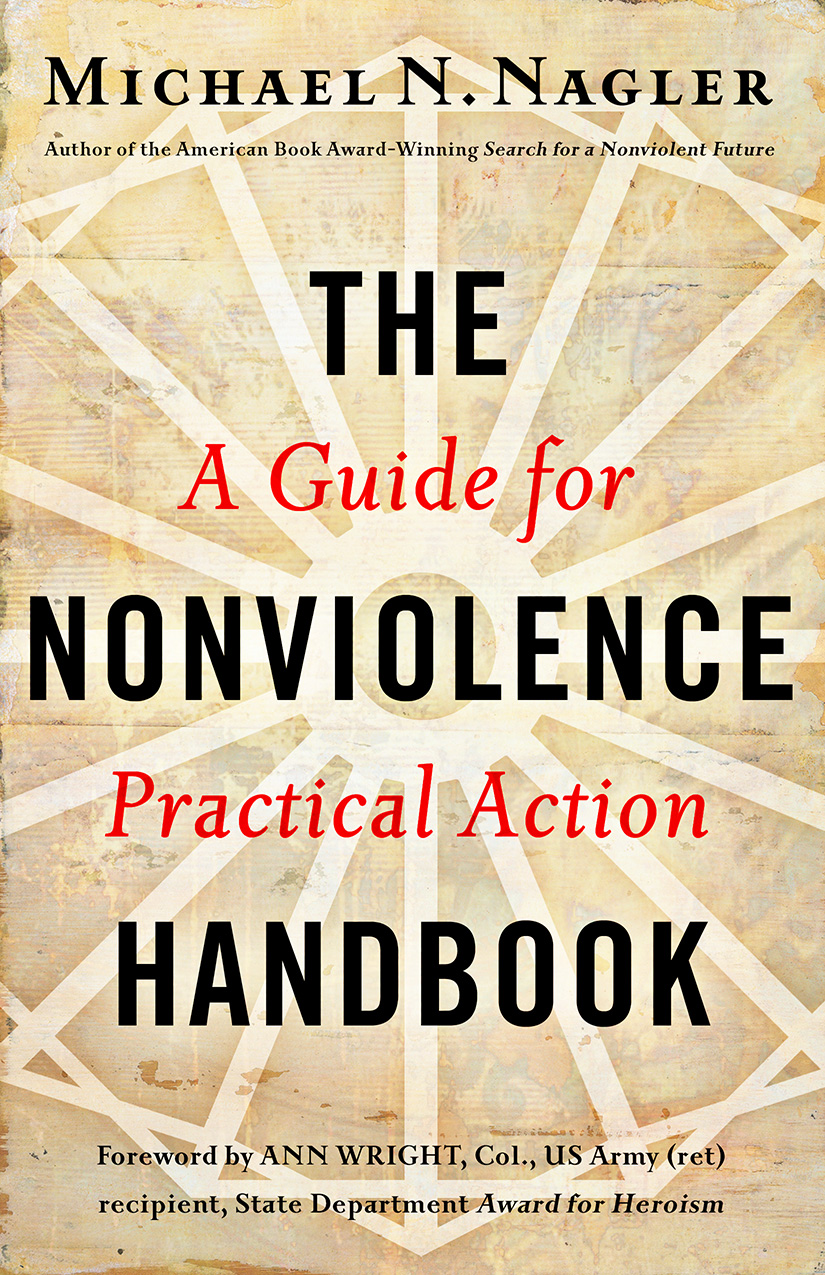
Michael N. Nagler Metta Center for Nonviolence
The First Mobilization Conference on Social Movements and Protest: Nonviolent Strategies and the State
San Diego, May 5-6, 2017
The conference at San Diego State University is planned as an informal and friendly gathering to present your current work, discuss it with others, network, and, generally, ponder the new directions in which our field is heading. It is organized by Mobilization: An International Quarterly, and sponsored by the Hansen Foundation for Peace. Plenary sessions will emphasize strategies, tactics, and nonviolent approaches to social change. Submissions on a range of topics in our field are invited for paper sessions. Organizers will attempt to accommodate submissions by assigning accepted papers to thematic sessions and roundtables such as:
- Strategies of nonviolence
- Tactical variation and movement outcomes
- Repertoire innovation in contemporary movements
- Trends in social movement theory
- Violent versus nonviolent strategies
- Contemporary movements and popular protest
- Social media, digital technologies, and repertoire shift
- Crossnational and historical analysis
- And more, depending on submissions
Abstracts are due December 31, 2016. Hotel rooms are available in historic Old Town San Diego, an easy trolley ride to the university and a 10-minute ride to San Diego’s scenic harbor, Seaport Village, and Gas Lamp Quarter. Email inquiries about housing and logistics, and submit your abstracts, to Hank Johnston at [email protected]. A nonrefundable registration fee of $75.00 is payable upon abstract acceptance. Registration includes a Cinco de Mayo reception dinner at an elegant Old Town restaurant, and a 2017 subscription to Mobilization (a $50.00 value). Completed papers are due April 1, 2017.
Send Abstracts to [email protected]
Mobilization: An International Quarerly
“Beyond Revenge” Interview with filmmaker Luz Jahnen. Thoughts on forgiveness, reconcilation, and justice
Interview with Luz Jahnen, producer of the documentary film, “Beyond Revenge”. “Beyond revenge” is a non commercial project built thanks to the volunteer support of more than forty people from different countries. The documentary will be distributed for free. The new point of view on revenge, from a personnel to a social and historical angle, points to became an instrument allowing reflection than can encourage and reinforce an opposite direction to the violence. Trailer “Beyond Revenge”: https://www.youtube.com/watch?v=2s02m…
pressenza October 5, 2016 Video
IPB 2016, Reiner Braun: “We need more activities for Peace all over the world”
At the end of the International Peace Bureau World Congress in Berlin we asked Reiner Braun, Co-President of IPB, to give us some final comments.
pressenza October 3, 2016 Video
Medea Benjamin: “Nonviolence is the only path”
During the International Peace Bureau World Congress in Berlin we have interviewed Medea Benjamin, US activist for peace and human rights.
pressenza October 3, 2016 Video
ZEESE AND FLOWERS | LIVING IN THE ILLUSION OF DEMOCRACY
The United States is in the peak of the very long election year. The presidential debates are running in full force. The media is deep into coverage of Donald Trump and Hillary Clinton. And, the people are feeling unrepresented.
In this environment it is hard to see the full picture. We’ve published many articles that describe the oligarchic plutocracy – a government that serves the wealthy and privileged – that we live in. In the midst of the presidential campaign, we have an opportunity to see how the 1% maintains control and prevents a government that serves the 99%.
By Kevin Zeese and Margaret Flowers Popular Resistance October 1, 2016
HUMOROUS POLITICAL STUNTS: Nonviolent Public Challenges to Power
A group of anti-conscription activists break into a prison, demanding to be jailed together with their friend already locked up because of his beliefs. Clowns from the rebel clown army mimic police sent to control political protests. Visiting Santas hand out presents taken from shop shelves without the approval of the shopping centre management. These are examples of humorous political stunts – public actions, hoaxes and happenings that confront systems of power. This book contains many amusing stories of such stunts, showing the boldness and creativity of the activists. Interviews and documents are used to show how humour can facilitate outreach, mobilisation and a culture of resistance. Humorous Political Stunts combines insights from the fields of nonviolence and humour studies and makes theoretical contributions to each area.
Written about “Humorous Political Stunts: Nonviolent Public Challenges to Power”
“Sørensen’s excellent dissertation is well written, researched and theorized, and opens up new ground in the field of culture and social change. Her experience as an activist works to her advantage as she knows what questions to ask that are relevant not only to the academy but to the project of social change.” – Stephen Duncombe, Associate Professor of Media and Culture at New York University and co-director of the Center for Artistic Activism
“Her stories are worth telling for their entertainment value alone, and also as salutary evidence that the committed life of a social activist can also be great fun. For that we thank her.” – Metta Spencer, Emeritus Professor of Sociology at University of Toronto
How to buy “Humorous Political Stunts: Nonviolent Public Challenges to Power”
Customers living in Sweden can buy the book through Samlade Skrifter
Customers living elsewhere can buy the book by clicking at the button below

JOURNAL OF RESISTANCE STUDIES
Journal of Resistance Studies is an international, interdisciplinary and peer- reviewed scientific journal that explores unarmed resistance. The focus is on critical understandings of resistance strategies, discourses, tactics, effects, causes, contexts and experiences. Our aim is to advance an understanding of how resistance might undermine repression, injustices and domination of any kind, as well as how resistance might nurture autonomous subjectivity, as e.g. constructive work, alternative communities, oppositional ways of thinking.
The Journal of Resistance Studies welcomes critical reflections, evaluations, theoretical developments or more empirical based analysis. We encourage a broad and critical discussion on the possibilities, forms, and conditions, as well as problematics of ‘resistance’. We avoid dogmatic agendas and do not favor any particular framework, and encourage a debate on definitions of ‘resistance’.
Under the editorial leadership of Stellan Vinthagen at the University of Massachusetts Amherst and published through Irene Publishing in Sweden the journal aim to expand the understanding of conflicts through focus on how resistance with unarmed means impacts power relations. We are striving to cover a wide spectra of topics that can help to deepen the theoretical and practical understanding of how resistance functions in different contexts.
The first issue includes an article by John Holloway on the role of Resistance Studies.
Richard Jackson invites to a critical discussion of the need to change focus for Peace Studies in his article: “How Resistance Can Save Peace Studies”.
Christopher Kullenberg writes on how “Citizen Science” can function as a form of Resistance.
Jason MacLeod has a text on practical advices for how to build resilience to repression in nonviolent resistance struggles.
Daniel Møller Ølgaard have an article of the role of humor in resistance movements; “Play, Politics & the Practice of Resistance”.
The international Editorial Board of JRS includes many of the well known researchers with relevance for resistance studies. A first regional editorial group is established in Latin America and JRS want to develop into a truly global journal.
Buy volume 1, number 1 at Samlade Skrifter
TO PREVENT OR STOP WARS: WHAT CAN PEACE MOVEMENTS DO?
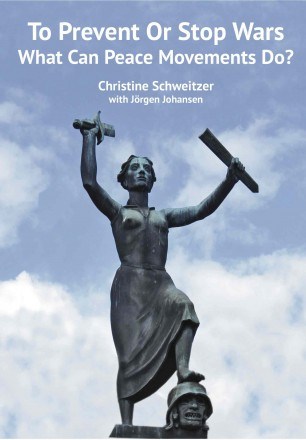 by Christine Schweitzer with Jørgen Johansen.
by Christine Schweitzer with Jørgen Johansen.
This book studies examples of peace movements of the last 110 years, from the conflict between Norway and Sweden in 1905 to the debate on military intervention in Syria in 2013. It looks at the impact these movements have had on the prevention or the ending of wars. It looks at the impact these movements may have had on the prevention or the ending of wars their own governments were engaging in. – Norway-Sweden 1905 – the movement against the Vietnam war in the 1960s and early 1970s – the movement against the support of the Contras in Nicaragua in the 1980s – the peace movement of the 1980s against nuclear weapons – the case of the Women in White in Liberia in 2002-2003 – the movement against the Iraq war in 1991 – the movement against the Iraq war in 2003
Customers living in Sweden can buy the book through Samlade Skrifter
Customers living elsewhere can buy the book by clicking at the button below
![]()
All effective forms of protest are illegal until they succeed.
September 4, 2016 · by
GAME CHANGER
When we think about foreign policy, when we consider our course of action in a conflict, how do we make decisions? Are they wise decisions? Can we do better?
We are arguably decades into the war on terror, probably beginning in the modern era back in 1964 with the Palestinian Liberation Organization’s attack on the National Water Carrier in Israel. Everything we’ve done has been destructive. We are great at destroying. Bomb refugee camps. Bomb Iraq, and Afghanistan, also Pakistan, don’t forget Somalia, Libya or Yemen. Bomb bomb bomb.
Fast forward to today and we are, as usual, bombing the bejeezus out of several countries. Just in the bombing campaign against the Islamic State, as of mid- August, the US has conducted 4,433 bombing raids on Syrian territory and 6,693 on targets in Iraq in its 708 days of operations, and the Pentagon says it’s costing about $11.9 million each one of those days. The sorties run far more than 150,000 with enormous fuel use, plus the further giant carbon footprint as they destroyed 1,620 oil depots and other oil facilities. Is it any wonder that the US military is the single largest consumer of petroleum fuel on Earth at more than 100 million barrels annually and we’ve taken over from Saddam as the world’s biggest destroyer of oil wells and tanks and oil production facilities? Good luck meeting any carbon reduction goals as long as our solution to conflict is to drive fuel-hog planes to bomb oil facilities.
But is there any other way to defeat terrorism?
Yes.
Big carrots and big nonviolent sticks have worked well on dictators, military juntas, despots, foreign rulers and fascists from Serbia to Chile to Eastern and Central Europe to the Philippines and elsewhere. Such a program has worked on state terrorists, communist dictators, and brutal monarchs. It takes three primary components.
One, planning. Adaptive planning sets out a hypothetical path to success and adjusts as necessary with changing conditions.
Two, a coalition. A growing number of allies can cause a sense that we are legitimately ethical and reasonable. Allies based on bribery (e.g. military aid, etc.) are unhelpful but allies based on a determined commitment to transformation increase chances for success. Sanctions need to be smart and unbreakable.
Three, discipline. It is a demonstrable trend that when violence is eschewed but all other methods of force are utilized it most often results in sustainable gains.
Apathy and conflict avoidance do not work. Destruction does not work, unless we seek temporary gains at the cost of long term losses.
Simply put, what we are currently doing—daily bombing in up to seven nations–has minimal benefits (except to war profiteers whose blood money comes out of taxpayers’ pockets) and maximal costs. It is long past the time when we should be trying an entirely different way to run our international policies and conflict management methods.
When atrocities have been committed it is harder to avoid reacting with violence to fresh attacks, but that is exactly what would give the US enormous approval and goodwill in the world. We can fix this, but it will take that level of regrouping and reassessment. When one tactic proves unworkable, it’s time to try another. War has had its fair chance and has failed, completely, for 15 years or more.
Hey, ISIS, we need to talk.
Hey, my fellow American voters, we need to elect leaders who can get this done. Innovation has been abandoned to devastation—let’s fix this.
Tom H. Hastings is Founding Director of PeaceVoice.
When we think about foreign policy, when we consider our course of action in a conflict, how do we make decisions? Are they wise decisions? Can we do better?
We are arguably decades into the war on terror, probably beginning in the modern era back in 1964 with the Palestinian Liberation Organization’s attack on the National Water Carrier in Israel. Everything we’ve done has been destructive. We are great at destroying. Bomb refugee camps. Bomb Iraq, and Afghanistan, also Pakistan, don’t forget Somalia, Libya or Yemen. Bomb bomb bomb.
Fast forward to today and we are, as usual, bombing the bejeezus out of several countries. Just in the bombing campaign against the Islamic State, as of mid- August, the US has conducted 4,433 bombing raids on Syrian territory and 6,693 on targets in Iraq in its 708 days of operations, and the Pentagon says it’s costing about $11.9 million each one of those days. The sorties run far more than 150,000 with enormous fuel use, plus the further giant carbon footprint as they destroyed 1,620 oil depots and other oil facilities. Is it any wonder that the US military is the single largest consumer of petroleum fuel on Earth at more than 100 million barrels annually and we’ve taken over from Saddam as the world’s biggest destroyer of oil wells and tanks and oil production facilities? Good luck meeting any carbon reduction goals as long as our solution to conflict is to drive fuel-hog planes to bomb oil facilities.
But is there any other way to defeat terrorism?
Yes.
Big carrots and big nonviolent sticks have worked well on dictators, military juntas, despots, foreign rulers and fascists from Serbia to Chile to Eastern and Central Europe to the Philippines and elsewhere. Such a program has worked on state terrorists, communist dictators, and brutal monarchs. It takes three primary components.
One, planning. Adaptive planning sets out a hypothetical path to success and adjusts as necessary with changing conditions.
Two, a coalition. A growing number of allies can cause a sense that we are legitimately ethical and reasonable. Allies based on bribery (e.g. military aid, etc.) are unhelpful but allies based on a determined commitment to transformation increase chances for success. Sanctions need to be smart and unbreakable.
Three, discipline. It is a demonstrable trend that when violence is eschewed but all other methods of force are utilized it most often results in sustainable gains.
Apathy and conflict avoidance do not work. Destruction does not work, unless we seek temporary gains at the cost of long term losses.
Simply put, what we are currently doing—daily bombing in up to seven nations–has minimal benefits (except to war profiteers whose blood money comes out of taxpayers’ pockets) and maximal costs. It is long past the time when we should be trying an entirely different way to run our international policies and conflict management methods.
When atrocities have been committed it is harder to avoid reacting with violence to fresh attacks, but that is exactly what would give the US enormous approval and goodwill in the world. We can fix this, but it will take that level of regrouping and reassessment. When one tactic proves unworkable, it’s time to try another. War has had its fair chance and has failed, completely, for 15 years or more.
Hey, ISIS, we need to talk.
Hey, my fellow American voters, we need to elect leaders who can get this done. Innovation has been abandoned to devastation—let’s fix this.
Tom H. Hastings is Founding Director of PeaceVoice.
By Tom H. Hastings // Posted with permission from PeaceVoice
New Book by Ken Butigan – Nonviolent Lives!
Reflection on a Training at the World Social Forum
Liberal Antiwar Activism is the Problem
“Liberalism itself has failed, and for a pretty good reason. It has been too often compromised by the people who represented it.”
― Hunter S. Thompson
Unfortunately, 2008 was the last time a significant number of antiwar activists protested Obama’s foreign policy. Yes, a small number of Americans made a fuss when Obama first threatened to bomb Syria, but those protests were driven by partisan and sectarian interests (the first and only time I saw Republicans and Communists working together). Furthermore, those protests weren’t sustained in any meaningful fashion, so the energy quickly dissipated. As everyone now knows, Obama eventually launched military strikes in Syria and the U.S. continues to bomb the country today.
IN AMERICA, UN FINDS RIGHTS TO PEACEFUL ASSEMBLY AND ASSOCIATION ERODED
…And Race Plays A Big Factor
…we have to build out all of these electoral possibilities while understanding that these politicians will be nothing unless they are backed by social movements and accountable to those social movements.
By Juan Gonzalez, Democracy Now! June 27, 2016 Reader Supported News June 27, 2016
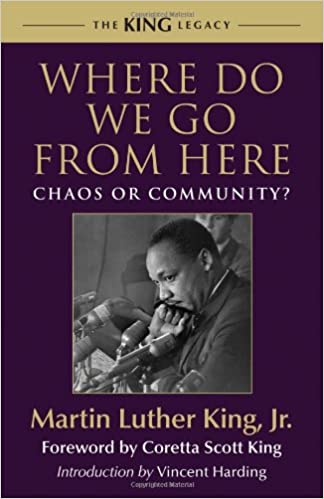
This powerful book has its own Wikipedia page here.
Hailed as a book about hope, it is that.
What is nestled in its pages as King addresses racism against Blacks (he uses the term Negros) are gems and tactics around not only organizing against racism, but organizing and acting nonviolently against both racism and in general that translate into our times.
CHRIS HEDGES | KSHAMA SAWANT: HOW TO COUNTER ESTABLISHMENT POLITICS (ON CONTACT VIDEO)
Chris Hedges interviews Kshama Sawant, a socialist elected to the Seattle City Council who has become a national political figure. She advocates for the political revolution that Bernie Sanders has brought to the fore, but discusses the need for a political revolution that goes far beyond Bernie as the organizing needs to continue for the long-term if we are to take our government back from the corporatocracy.
Since the early 1980s, polls in the US have shown that most people believe that the government is run by a few big interests looking out for themselves… I do not know of earlier polls, or polls in other countries, but it would not be surprising if the results are similar. The important question is: are people motivated to do something about it?
June 18th, 2016
New sources of power and grassroots energy are driving certain campaigns to scale with surprising speed and force.
It’s not easy being a systems-busting campaigner these days. Competition for funding is intense, attention spans have shriveled (especially among Millennials), and wicked problems lie behind many of the causes now championed at the national level.
Despite these challenges, new sources of power and grassroots energy are driving certain campaigns to scale with surprising speed and force.
Popular Resistance June 18, 2016
By Tom Liacas and Jason Mogus, www.ssir.org June 18th, 2016
BERNIE SANDERS ON PAUL WELLSTONE’S
VISION AND ACTIONS
You Tube Video
Lessons From Life Of Organizer Fred Ross For Committed Activists
By Bill Fletcher, Jr. for In These Times - The biographies of icons frequently fall into one of two categories. On the one hand they may be laudatory, in some cases turning the subject into a saint. At the opposite end, they can tend towards tell-all pieces, in some cases aiming to tear down the subject. What makes America’s Social Arsonist: Fred Ross and Grassroots Organizing in the Twentieth Century, Gabriel Thompson’s new biography of the legendary community organizer, unusual is that it presents a very balanced account of the life and work of one of the foremost progressive organizers of the 20th century… -more-
Popular Resistance June 12, 2016
It is difficult. It is hard. Be brave.
Rise Up Times June 6, 2016
Those Who Wage Peace Can’t Count on the Mainstream Media for Support
Truthout Rise Up Times May 2016
GENE SHARP (1) PRINCIPLED NON-VIOLENCE- OPTIONS FOR ACTION
Editor’s Note: This video actually has a number of parts. We have only posted the first. The others should appear at the end of the video on YouTube numbered (2), (3), etc. Two (2) is a continuation of this speech, while the others are from other speeches.
VIDEO> THE POWER AND POTENTIAL OF NONVIOLENT STRUGGLE BY GENE SHARP
Uploaded by BetterSpokane on Dec 26, 2011 The Power and Potential of Nonviolent Struggle by Gene Sharp. Gene Sharp, Senior Scholar of the Albert Einstein Institution, shares insights from his life study of how nonviolent struggle can work. For many years Gene and the Albert Einstein Institution have been mentors and catalysts for nonviolent struggle throughout the world.
198 METHODS OF NONVIOLENT ACTION! GENE SHARP
198 Methods of Nonviolent Action! These methods were compiled by Dr. Gene Sharp and first published in his 1973 book, ,The Politics of Nonviolent Action Vol. 2: The Methods of Nonviolent Action. (Boston: Porter Sargent Publishers, 1973). The book outlines each method and gives information about its historical use.
van Gelder: In every community I visited, I found people working hard to lay a different foundation for our society.
Yes! Magazine Summer 2016
 As individuals, how much and for how long should we adhere to our beliefs if they run counter to those of the community? To our neighbors (which would make us outcasts)? To the state (which would make us outlaws)?
As individuals, how much and for how long should we adhere to our beliefs if they run counter to those of the community? To our neighbors (which would make us outcasts)? To the state (which would make us outlaws)?
The Guardian May 31, 2016
WHEN THE POLICE CAME, I DIDN’T RISK ARREST. SO WHAT WAS MY ROLE AT THE BREAK FREE CLIMATE ACTION?
I had held at bay the question of whether I wanted to participate in direct action. But I also knew it was the heartbeat of this diverse movement.
Yes! Magazine Spring 2016
NOAM CHOMSKY ON CORPORATE MEDIA AND ACTIVISM 2016
In this interview, Prof. Noam Chomsky talks about the Corporate Media, their institutional role and which interests they serve in society. Chomsky also touches on how activists should react when they face harsh condemnation from the Corporate Media.
acTVism Munich Feb 15, 2016
REVIEW|WHY CIVIL RESISTANCE WORKS: THE STRATEGIC LOGIC OF NONVIOLENT CONFLICT
By attracting impressive support from citizens, whose activism takes the form of protests, boycotts, civil disobedience, and other forms of nonviolent noncooperation, these efforts help separate regimes from their main sources of power and produce remarkable results.
Chenoweth and Stephan conclude that successful nonviolent resistance ushers in more durable and internally peaceful democracies, which are less likely to regress into civil war
Erica Chenoweth and Maria J. Stephan Colombia University Press
THIS IS AN UPRISING: HOW NONVIOLENT REVOLT IS SHAPING THE TWENTY-FIRST CENTURY
The book careens around the globe, diving into campaigns and surfacing to offer fresh and often surprising lessons, even when examining well-known events.
Nation Books
“This Is an Uprising: How Nonviolent Revolt Is Shaping the Twenty-First Century”
A book by Mark Engler and Paul Engler
By Gabriel Thompson truthdig.com April 15, 2016
HOW TO CREATE AN “ECOLOGY OF CHANGE” BY COMBINING MOVEMENT UPRISINGS WITH LONG-TERM ORGANIZING
There is an amazing body of knowledge about civil resistance that has emerged over the past 50 years. We want to make more people aware of this field of study. And we want to show people the incredible potential that exists if we apply it to some of the social and political challenges we are facing right now in the United States.
By Mark Karlin Truthout | Interview May 1, 2016
A CONVERSATION WITH NOAM CHOMSKY ON ORGANIZING FOR A NEXT SYSTEM
An initial signatory to the Next System statement, Chomsky explores the connections between culture, mass movements, and economic experiments—which in “mutually reinforcing” interaction, may build toward a next system more quickly than you may think.
NOAM CHOMSKY TheNextSystemProject.org MARCH 24, 2016
Dellums: “Peace is the superior idea, that the umbrella movement for—of all movements, the peace movement, because to come together under the banner of peace forces us to challenge all forms of injustice,” Dellums said at the recent conference, “Vietnam: The Power of Protest.”
Democracy Now! May 25, 2015
ROBERT REICH: AXIOMS FOR ORGANIZERS BY FRED ROSS, SR.
Ross organized people to challenge police brutality, fight segregation, and become politically powerful… Fred Ross, Sr., was probably the most influential (but little-known) community organizer in American history. It was Ross who first identified, recruited and trained Cesar Chavez to become a leader…
Axioms for Organizers by Fred Ross, Sr., Trailblazer for Social Justice is a collection of organizing wisdom from decades of fighting for social justice and equality throughout the United States and around the world.
ZEESE AND FLOWERS: LIVING IN A POST-2011 WORLD
In the end the primaries have produced the two most unpopular candidates in US history. As Five Thirty Eight reports: “No major party nominee before Clinton or Trump had a double-digit net negative ‘strong favorability’ rating. Clinton’s would be the lowest ever, except for Trump.”
By Kevin Zeese and Margaret Flowers, www.popularresistance.org May 7th, 2016
PEACEFUL REVOLUTIONS AND THE POWER OF DISOBEDIENCE
While most people support initiatives to reduce nuclear and environmental threats, many also have a clear sense — call it skepticism or realism — that neither climate change nor arms proliferation can be reversed by the use of traditional political channels alone.
By Greg Guma Global Research May 07, 2016
MICHAEL ALBERT, NOAM CHOMSKY, ET. AL. | SOME POSSIBLE IDEAS FOR GOING FORWARD
Around the world powerful and diverse possibilities are in struggle. We the signers of “Some Possible Ideas for Going Forward” think one high priority for progress is activists developing, discussing and settling on priorities around which to organize multi-issue activism in coming months and years. We hope this document can help inspire more conversations within groups and movements that, over time, come to a synthesis.
By Michael Albert, Noam Chomsky, Marjorie Cohn, Bill Fletcher, Irene Gendzier, Kathy Kelly, Robert W. McChesney, Boaventura de Sousa Santos and Marina Sitrin
Truthout | Op-Ed Thursday, 07 April 2016
CHRIS HEDGES | WELCOME TO 1984
The artifice of corporate totalitarianism has been exposed. The citizens, disgusted by the lies and manipulation, have turned on the political establishment. But the game is not over. Corporate power has within its arsenal potent forms of control. It will use them. As the pretense of democracy is unmasked, the naked fist of state repression…
By Chris Hedges truthdig.com May 14, 2016
DANIEL ELLSBERG RECALLS THE SPIRIT OF RESISTANCE IN THE 1971 MAY DAY PROTESTS (VIDEO)
While Ellsberg is nonchalant when recalling his experience over those few days in early May, his fascinating tale of resistance to government shows that it was by no means an easy choice.
truthdig.com May 18, 2016
EDWARD SNOWDEN: INSIDE THE ASSASSINATION COMPLEX
A SINGLE ACT OF whistleblowing doesn’t change the reality that there are significant portions of the government that operate below the waterline, beneath the visibility of the public. Those secret activities will continue, despite reforms. But those who perform these actions now have to live with the fear that if they engage in activities contrary to the spirit of society — if even a single citizen is catalyzed to halt the machinery of that injustice — they might still be held to account.
Edward Snowden The Intercept May 3, 2016
THOUSANDS JOIN TOGETHER, LOOKING FORWARD FOR PEACE & PLANET
From the report: Througout the Conference, our speakers, workshops, and conversations centered around the great challenges to peace and the planet, and concrete ways to strengthen and connect our movements and struggles for a better, more just and peaceful world. Click here to watch all three of the Plenaries, as well as Workshops by Daniel Ellsberg and Global Hibakusha.
April 29, 2015 PeaceandPlanet.org
“I do not know what to call this system. It is certainly not capitalism. Extortion might be a better word.” Illustration by Mr. Fish By Chris Hedges Posted on May 19, 2013 truthdig.com Joe Sacco and I spent two years reporting from the poorest pockets of the United States for our book “Days of Destruction, Days of Revolt.”
By Chris Hedges Posted on May 19, 2013 truthdig.com
HILARY KLEIN: WOMEN ARE AT THE FOREFRONT OF THE ZAPATISTA REVOLUTION
Klein: From the civil rights movement in the United States to the Sandinista Revolution in Nicaragua, from the campaign against apartheid in South Africa to the Arab Spring uprisings in the Middle East, women have fought side by side with men for their people’s freedom. Women have been important actors and made invaluable contributions to grassroots social movements and national liberation struggles all over the world.
By Hilary Klein Seven Stories Press | Book Excerpt July 30, 2015
THOSE WHO WAGE PEACE CAN’T COUNT ON THE MAINSTREAM MEDIA FOR SUPPORT
The point I’m struggling to make is that democracy isn’t easy. Peace isn’t easy. Those who wage peace have to do so independent of global political and economic structures, and independent of much of the mainstream media.
ROBERT C. KOEHLER for Buzzflash at truthout.org May 12, 2016
HENRY A. GIROUX: HOPE IN A TIME OF PERMANENT WAR
Giroux: Democratic hope is a subversive, defiant practice that makes power visible and interrogates and resists those events, social relations, and ideas that pose a threat to democracy.
Henry A. Giroux Philosophers for Change September 10, 2013
SUE ANN MARTINSON | DISSENT, ACTIVISM, AND OPPRESSION IN THE 1970S AND TODAY: AN EXPLORATION
Martinson: These actions for justice and peace, carried out with passion and love, are living demonstrations of moral indignation against a morally bankrupt system and of taking a stand in action in accordance with what should be our Constitutional civil rights and civil liberties.
Editor’s Note: A slightly different version of this article appeared in the Women Against Military Madness Newsletter, Volume 33, Number 5, Fall I 2015.
HENRY A. GIROUX | FLIPPING THE SCRIPT: RETHINKING WORKING-CLASS RESISTANCE
Subjectivity has been stripped of any meaning, reduced to the gaze of public relations industries that feed the dispossession by extraction machine. Capitalism has reached its endpoint, blind to its death march. Fortunately, more and more young people and others are refusing to stand by and let state terrorism and market fundamentalism define their everyday lives.
By Henry A. Giroux Truthout.org | News Analysis June 8, 2015
HOW TO CREATE AN “ECOLOGY OF CHANGE” BY COMBINING MOVEMENT UPRISINGS WITH LONG-TERM ORGANIZING
There is an amazing body of knowledge about civil resistance that has emerged over the past 50 years. We want to make more people aware of this field of study. And we want to show people the incredible potential that exists if we apply it to some of the social and political challenges we are facing right now in the United States.
By Mark Karlin Truthout | Interview May 1, 2016
Hedges: If things unravel [in the U.S.], our backlash may very well be a rightwing backlash — a very frightening rightwing backlash. We who care about populist movements [on the left] are very weak, because in the name of anti-communism these movements have been destroyed; we are almost trying to rebuild them from scratch. We don’t even have the language to describe the class warfare that is being unleashed upon us by this tiny, rapacious, oligarchic elite. But we on the left are very disorganized, unfocused, and without resources.
Salon.com June 4, 2015
JEFF NOONAN: WHAT DOES REVOLUTION MEAN TODAY?
That ruling classes can still be constrained by political and moral costs tells us something of profound positive importance. Today, revolutionary politics must be resolutely non-violent — the goal of movements for fundamental social change can no longer be to overthrow the state by force, but to overwhelm the state’s legitimacy through organizing a gigantic, […]
by Jeff Noonan Philosophers for Change July 23, 2013
CHRIS HEDGES: OUR INVISIBLE REVOLUTION
“Because revolution is evolution at its boiling point you cannot ‘make’ a real revolution any more than you can hasten the boiling of a tea kettle,” Berkman wrote. “It is the fire underneath that makes it boil: how quickly it will come to the boiling point will depend on how strong the fire is.”
By Chris Hedges Oct 28, 2013
OCTOBER2011.ORG NEWS: A WHOLE LOTTA ORGANIZING GOING ON!
Because a sustainable future depends on the people willing to see the truth for what it is, and for those to stand up in unison in order to make a difference. — Jake Edward Keli’i Eakin There are many types of summer camps. Did you know that there is one that is specifically for […]
July 2012







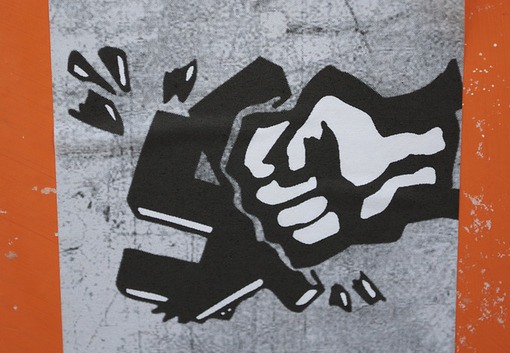
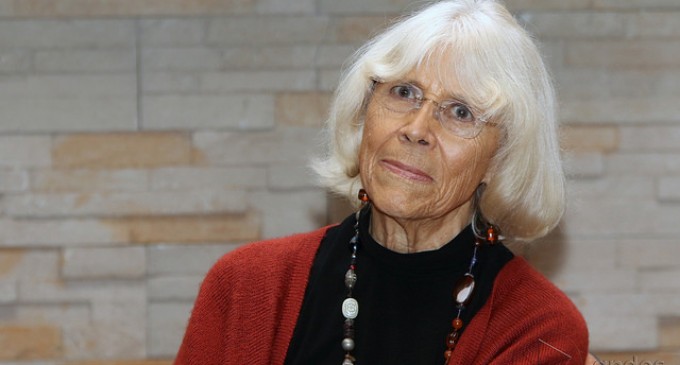




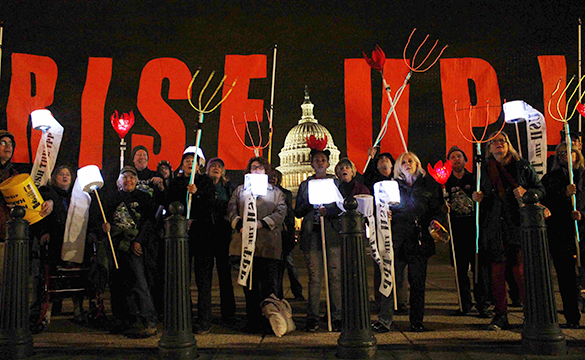


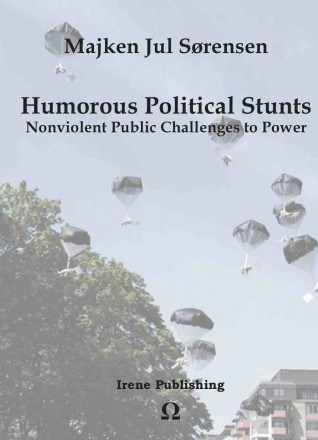
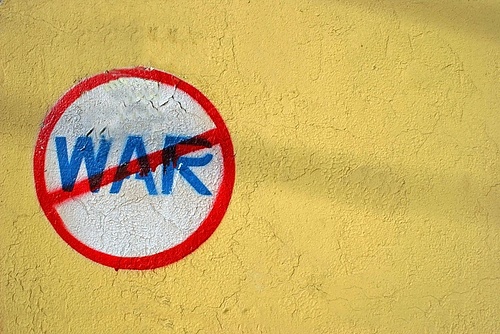


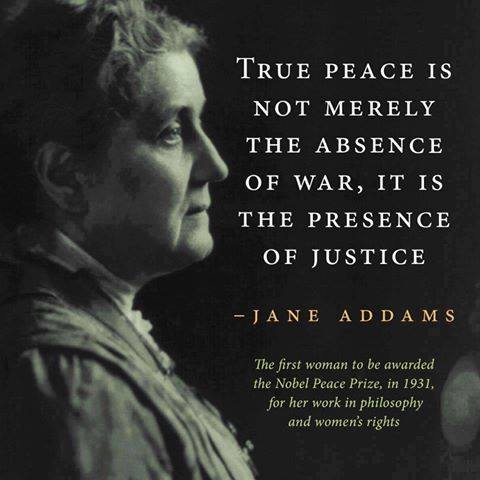







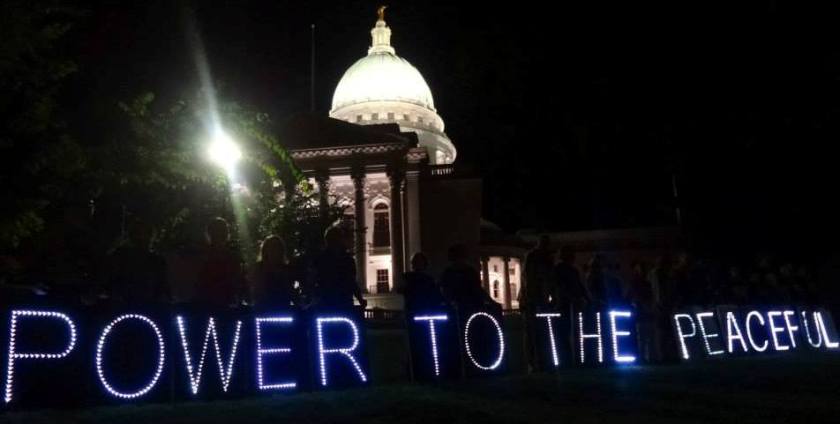
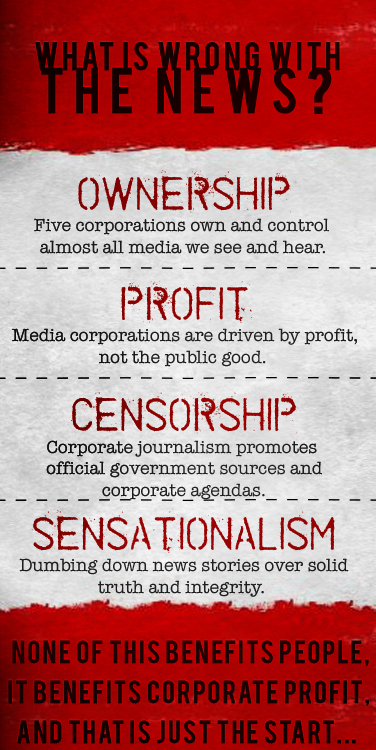
‘Nonviolent resistance works not by melting the heart of the opponent but by constraining their options.’ Photograph: Frank Franklin II/AP
Many people across the United States are despondent about the new president – and the threat to democracy his rise could represent. But they shouldn’t be. At no time in recorded history have people been more equipped to effectively resist injustice using civil resistance.
Today, those seeking knowledge about the theory and practice of civil resistance can find a wealth of information at their fingertips. In virtually any language, one can find training manuals, strategy-building tools, facilitation guides and documentation about successes and mistakes of past nonviolent campaigns.
Material is available in many formats, including graphic novels, e-classes, films and documentaries, scholarly books, novels, websites, research monographs, research inventories, and children’s books. And of course, the world is full of experienced activists with wisdom to share.
Erica Chenoweth The Guardian February 1, 2017 Read more by clicking the title link.